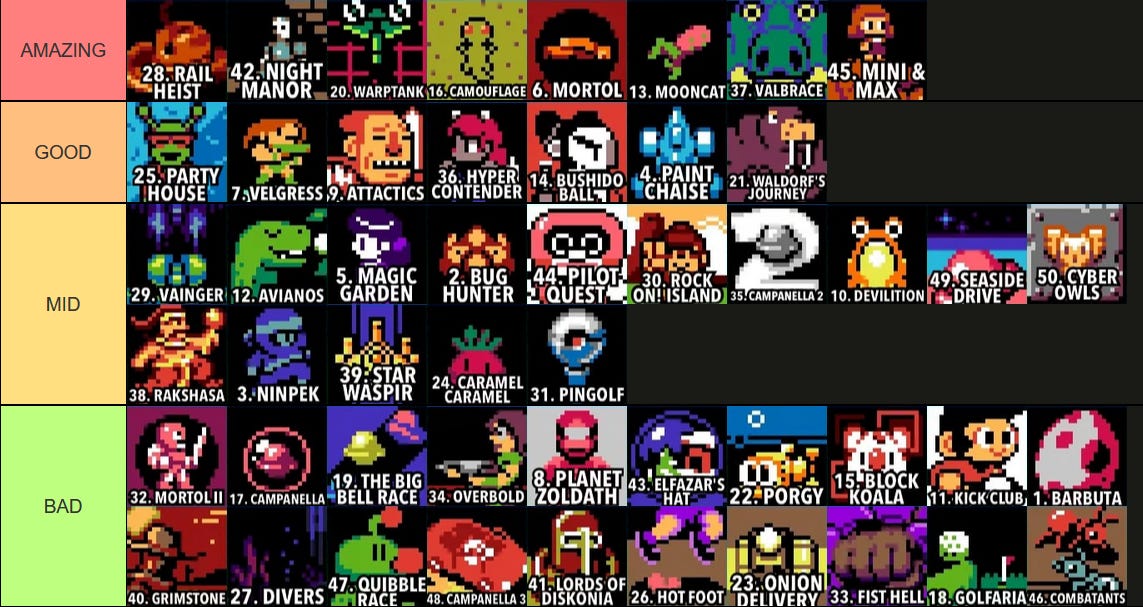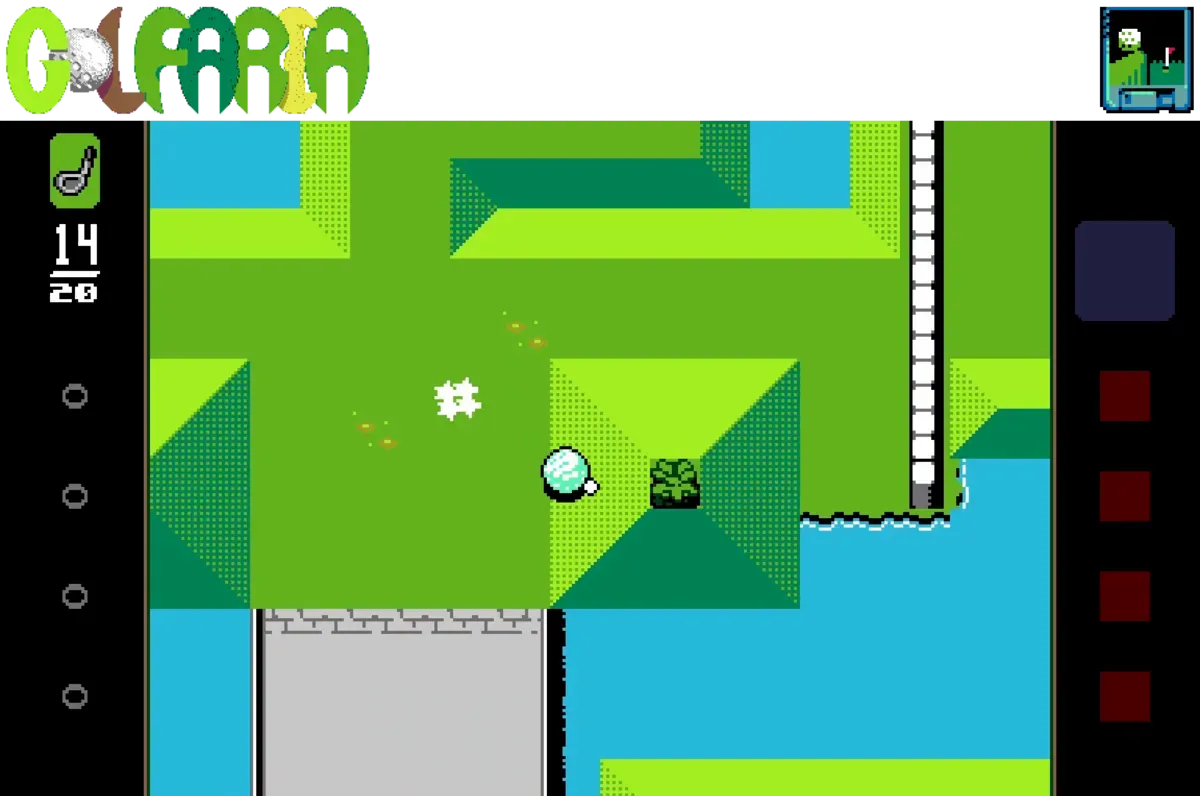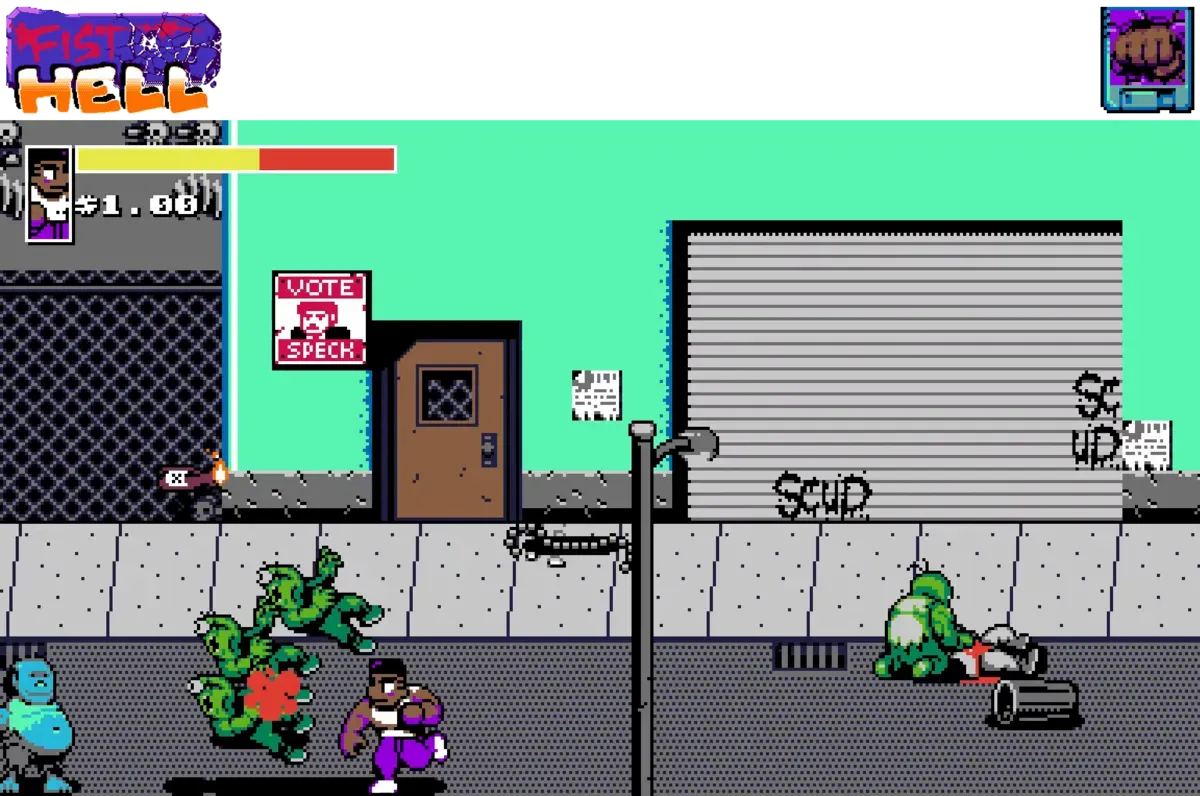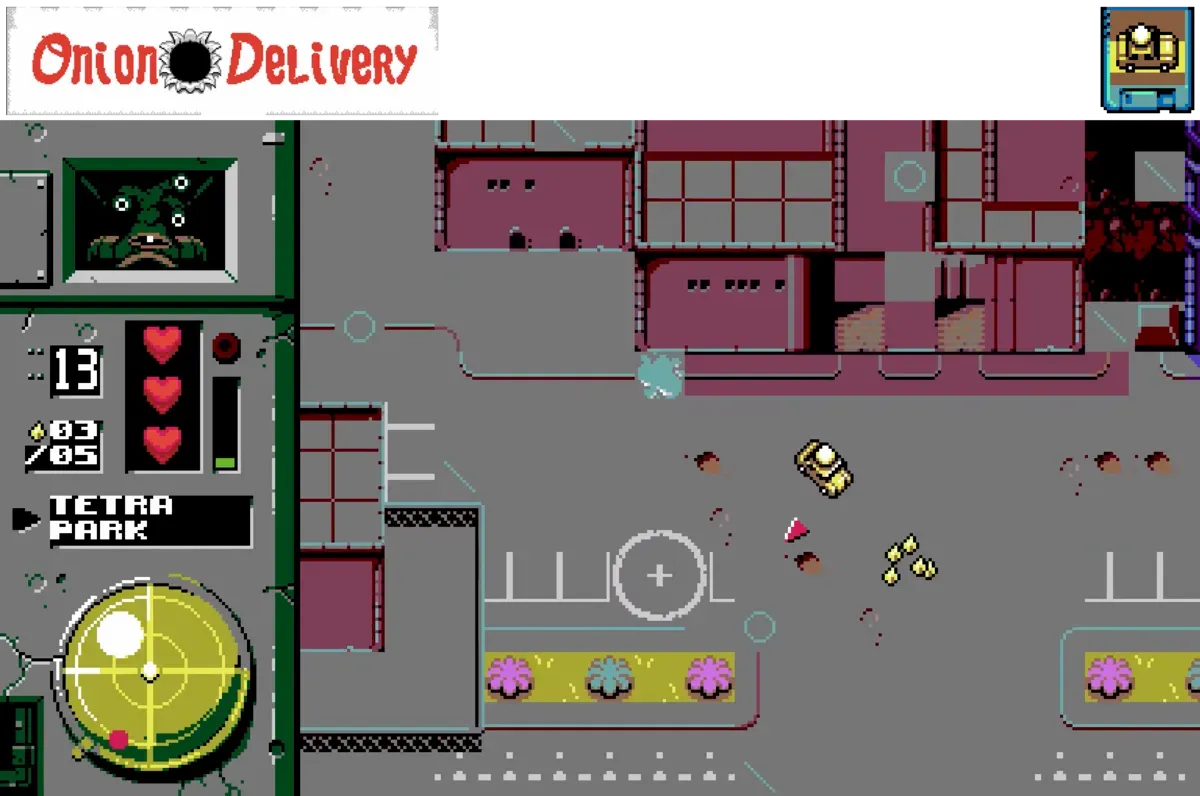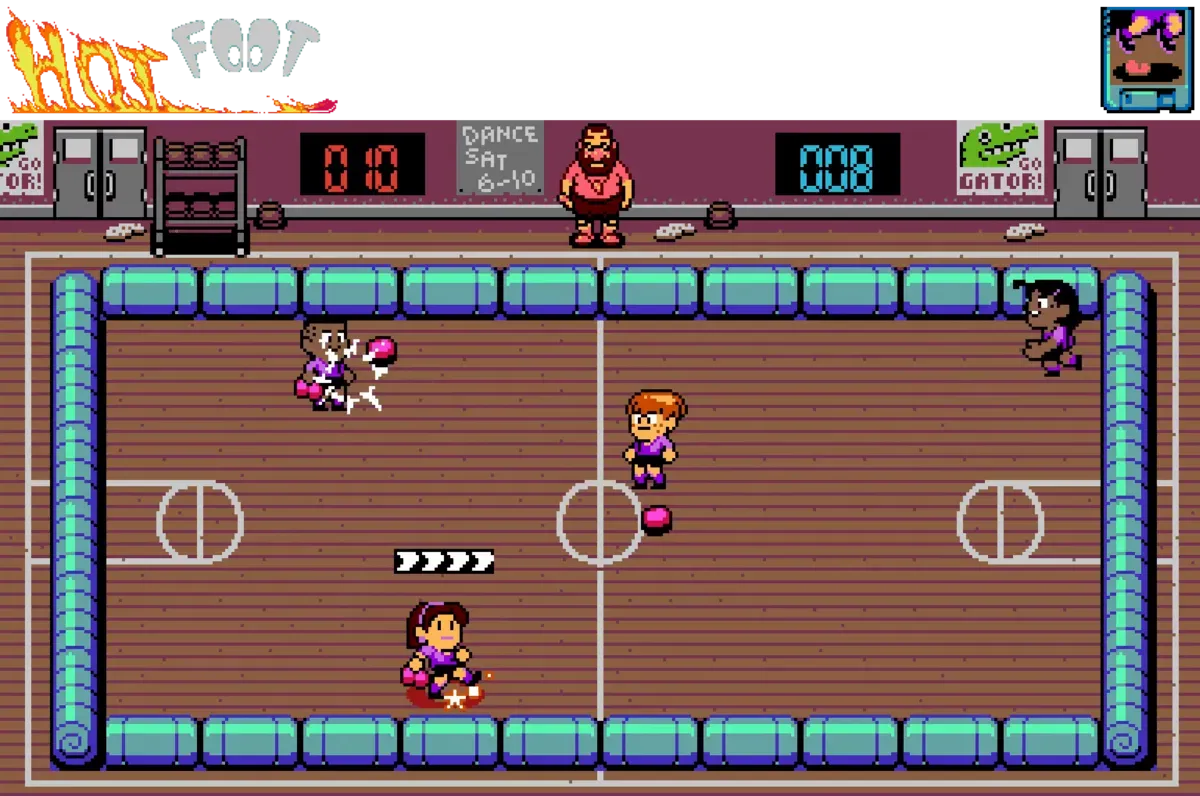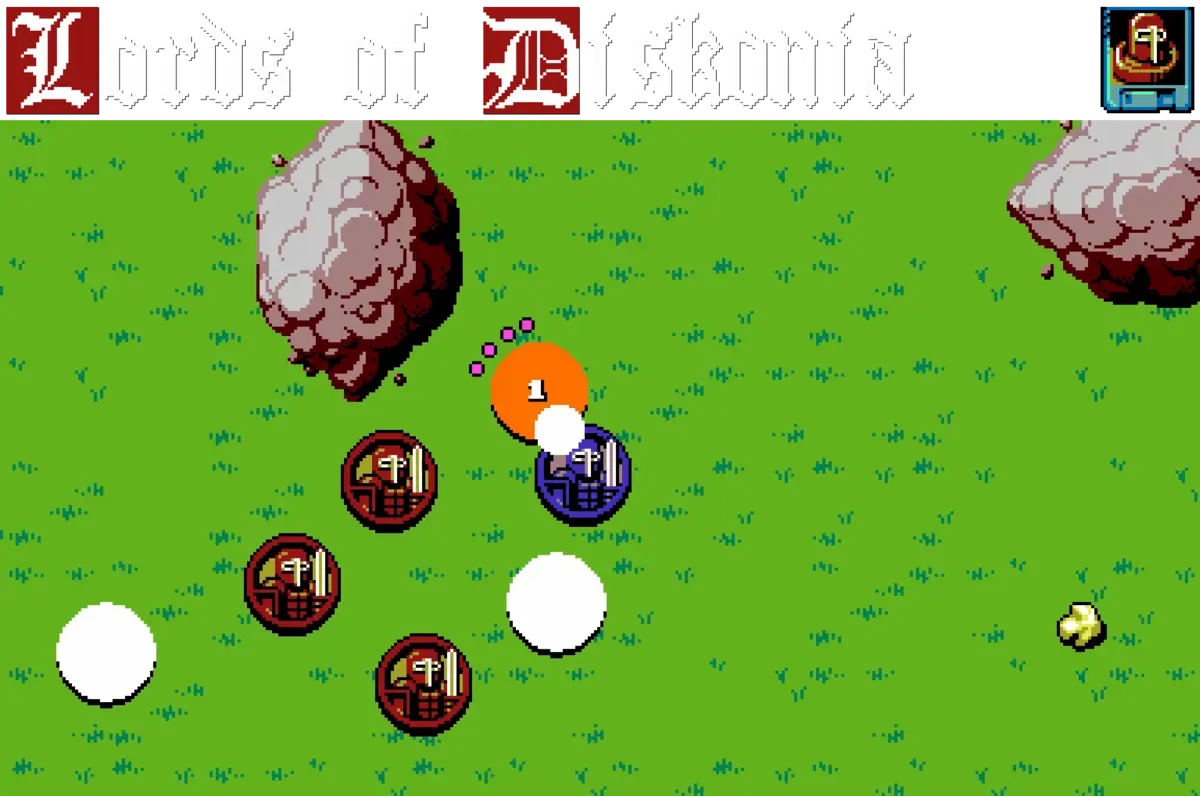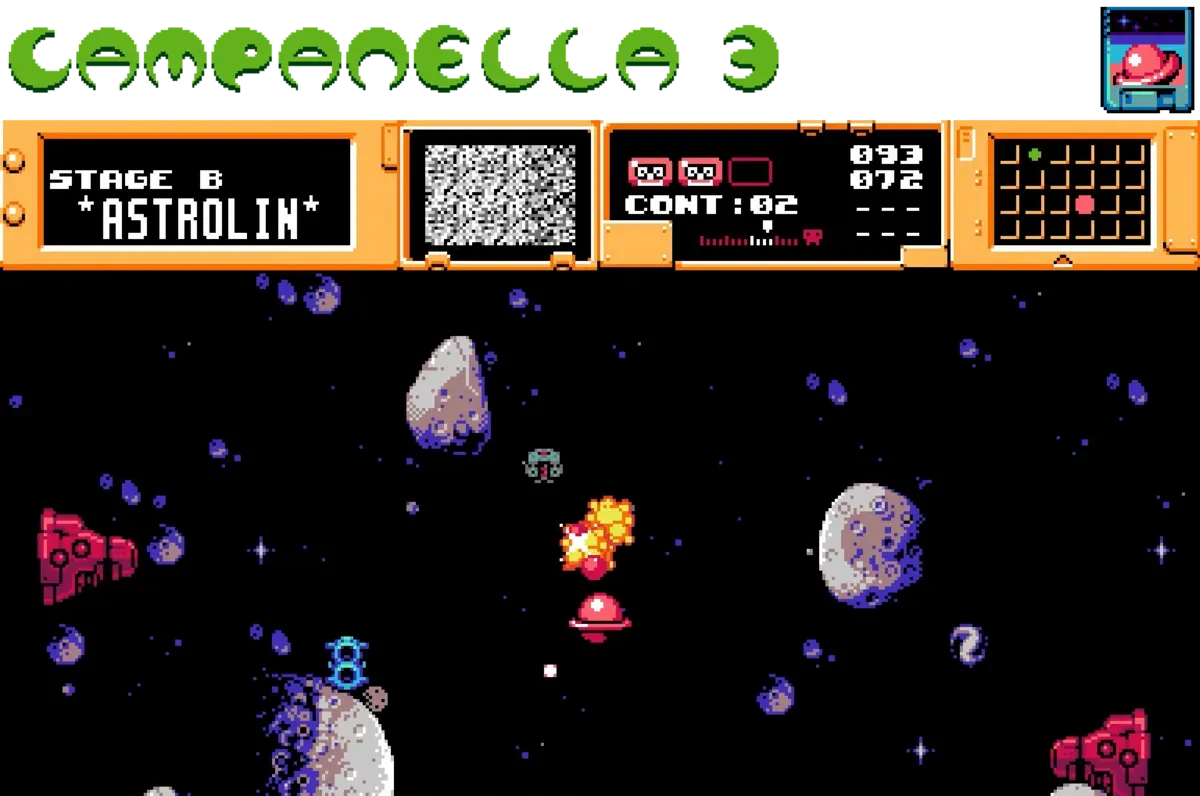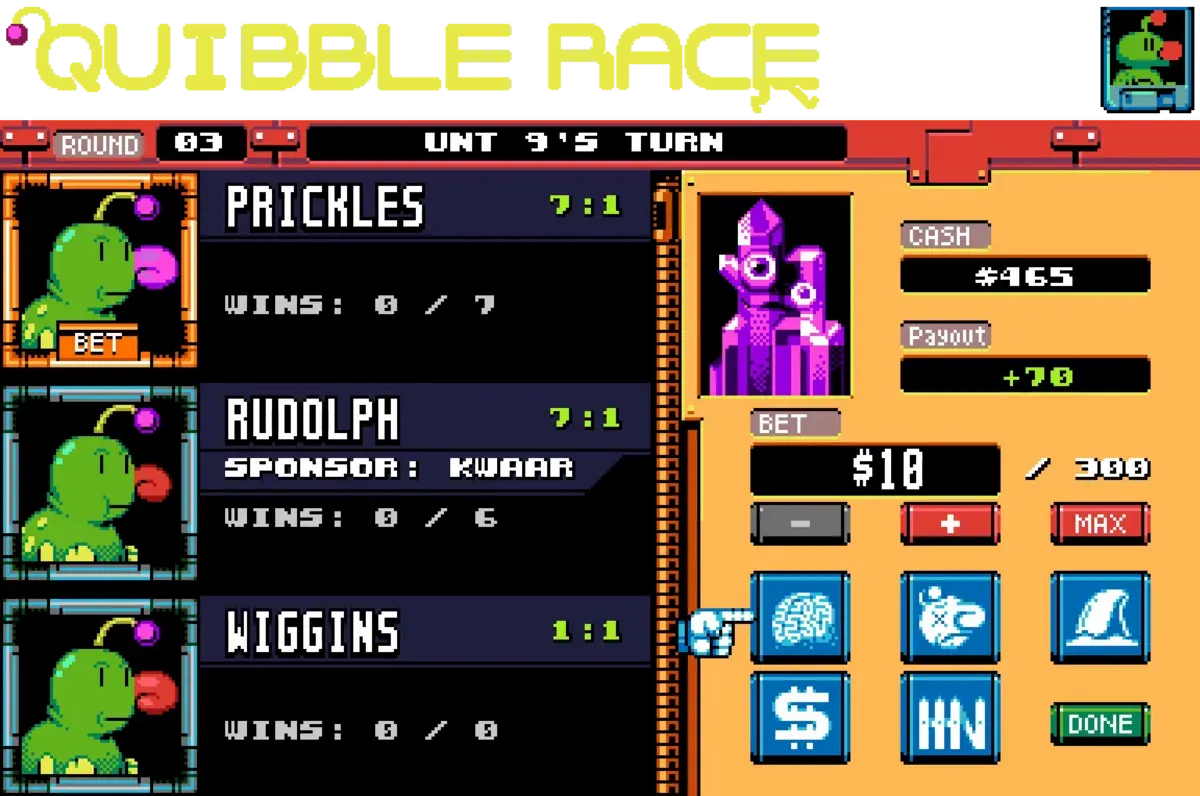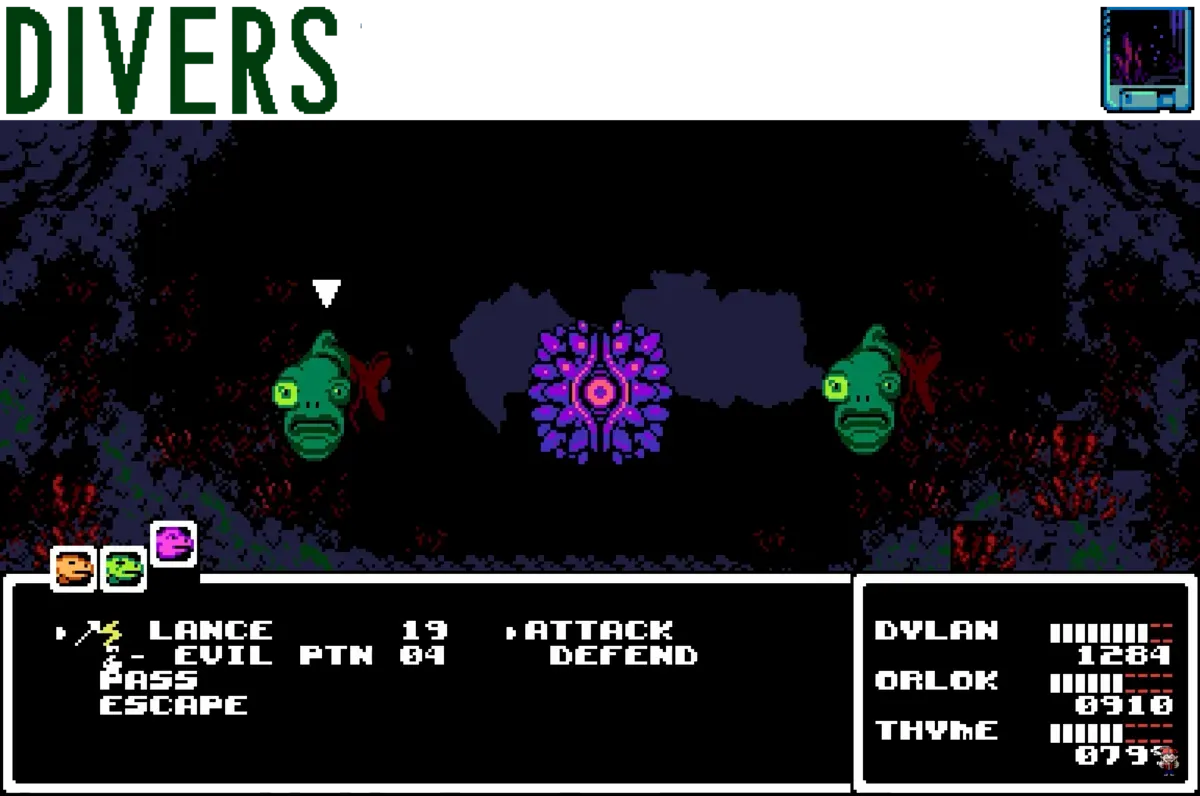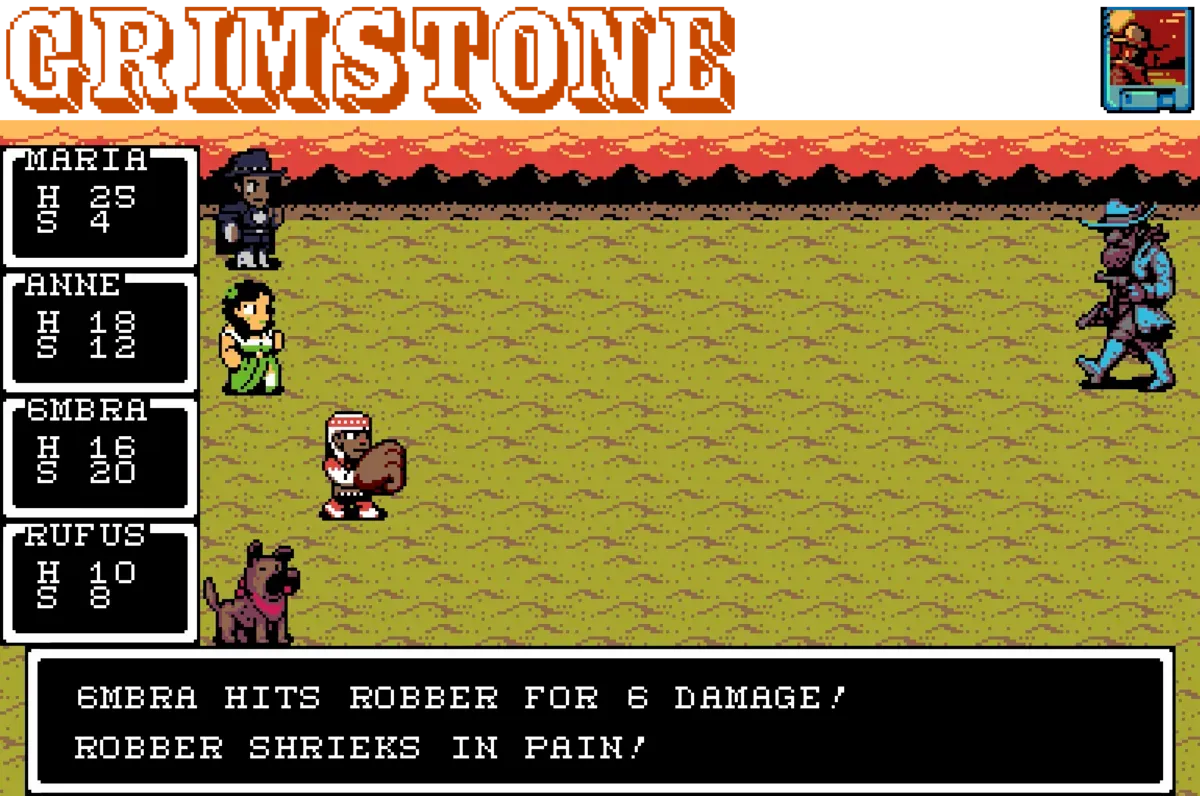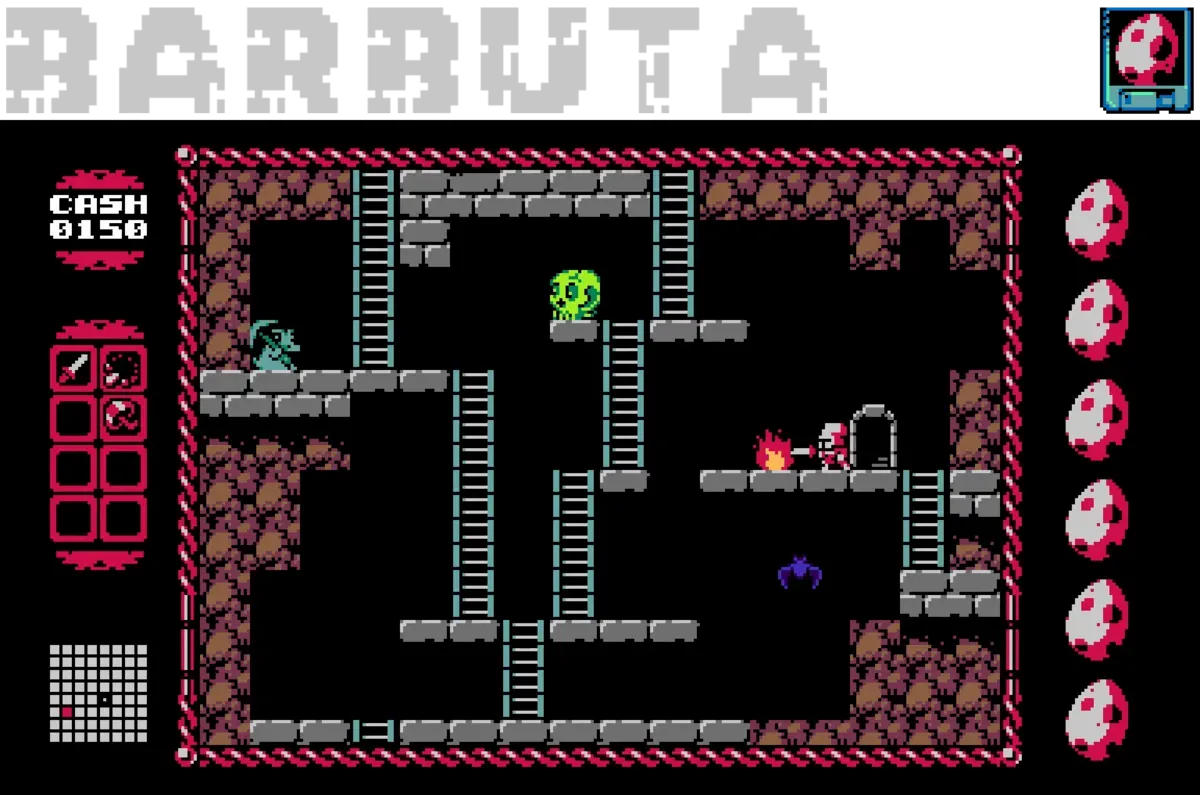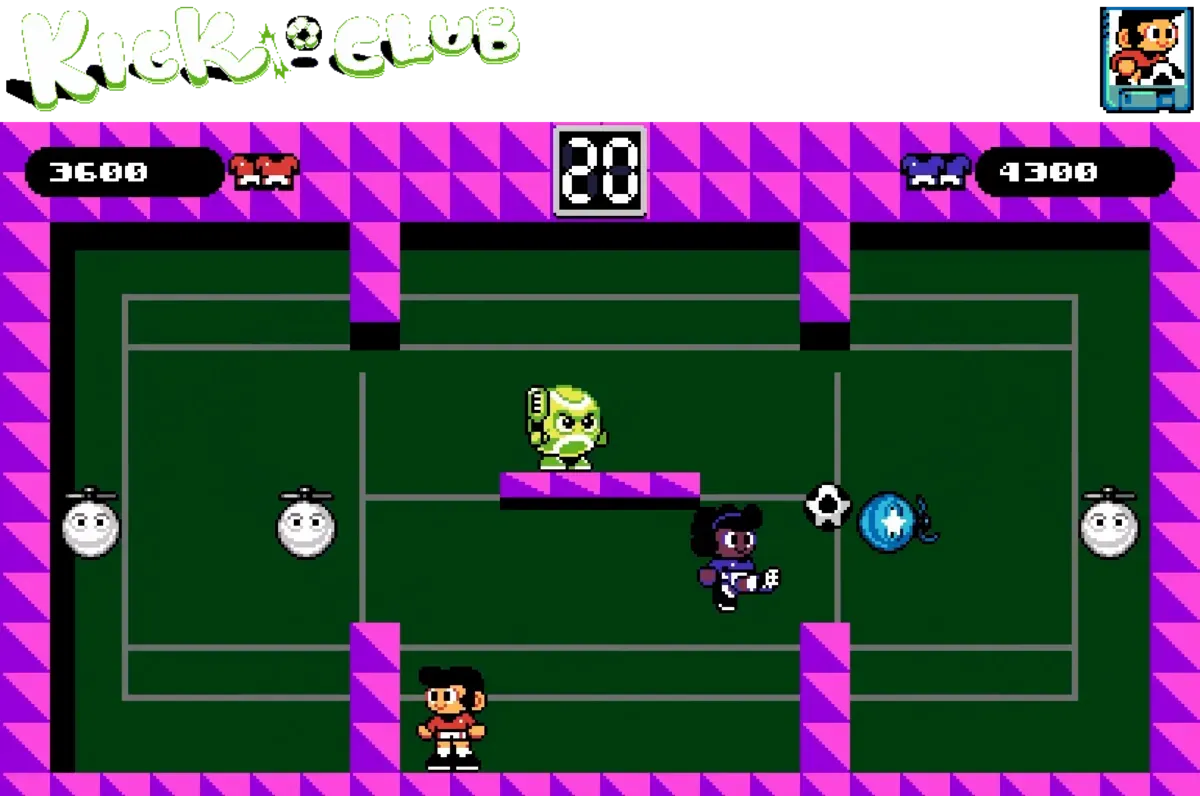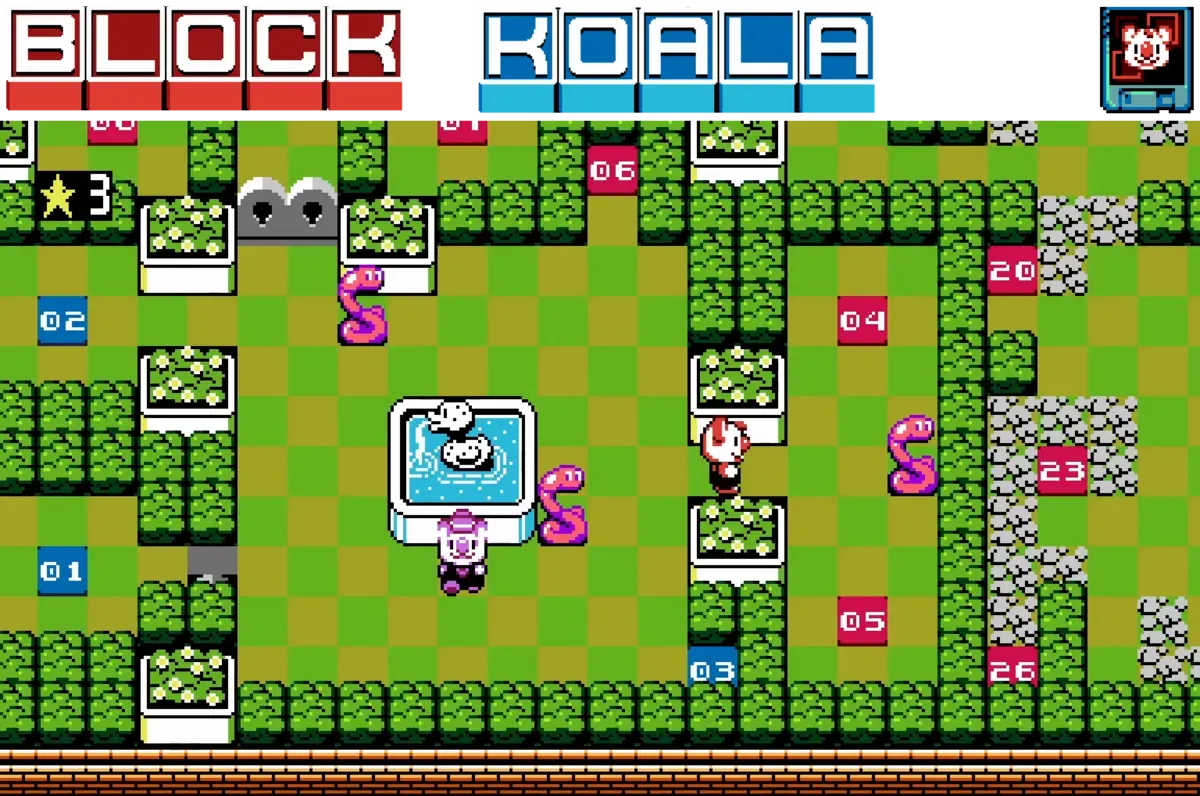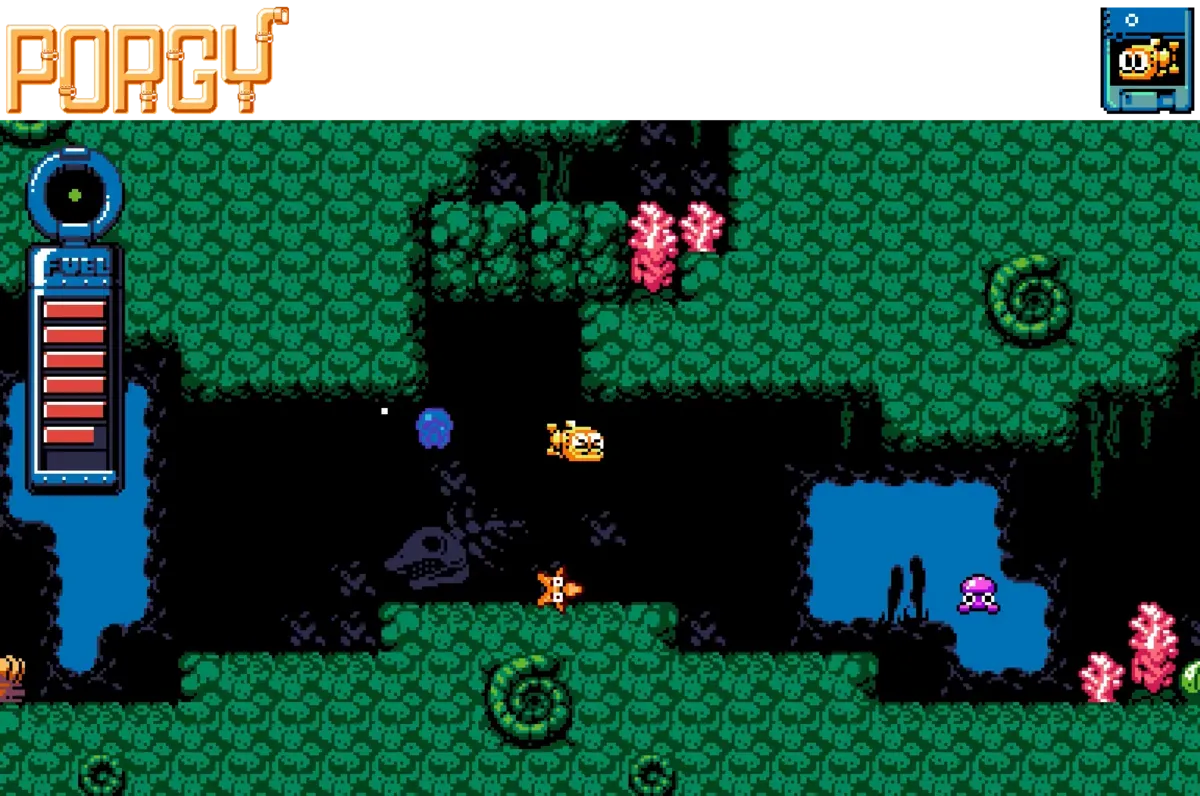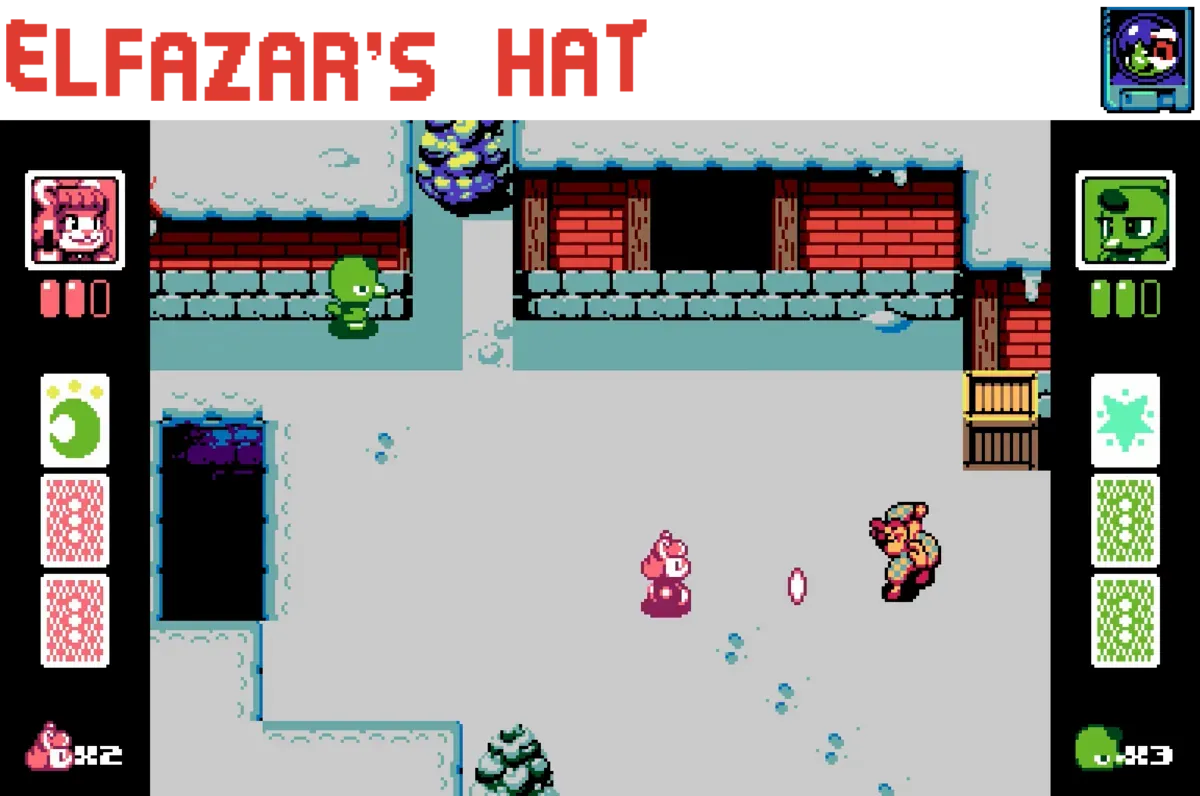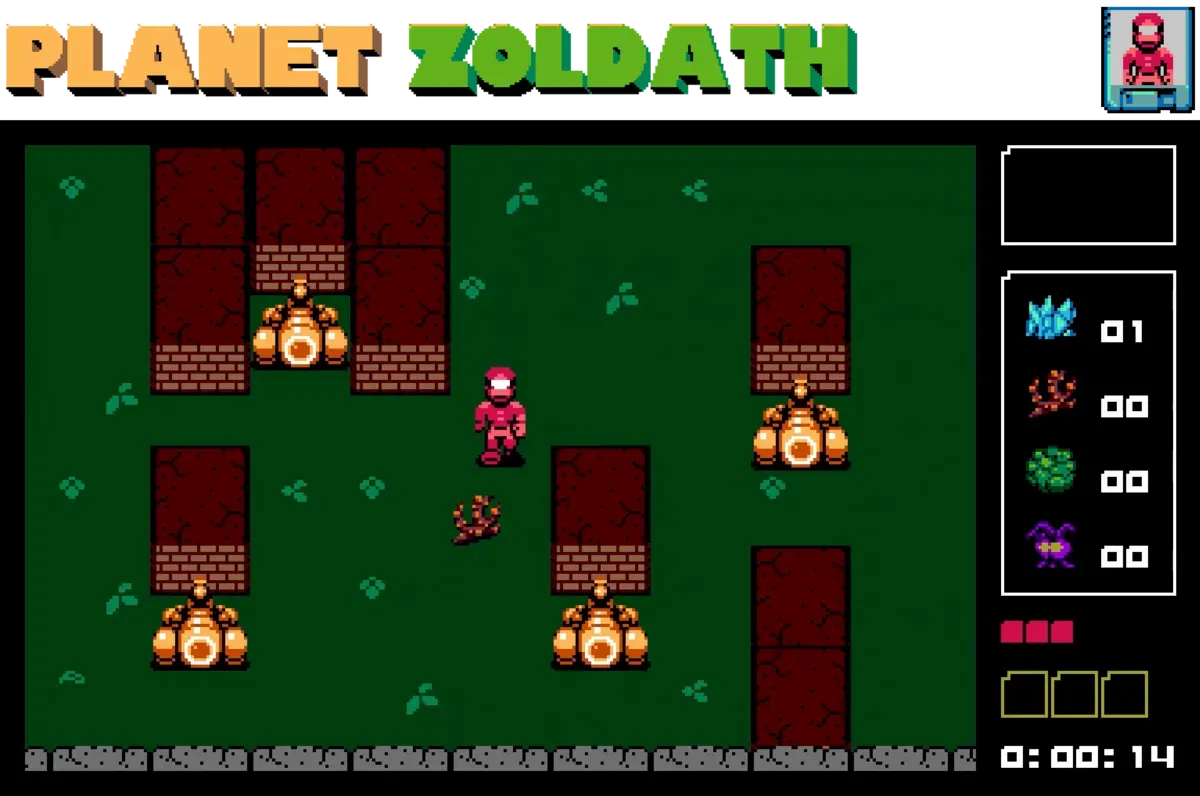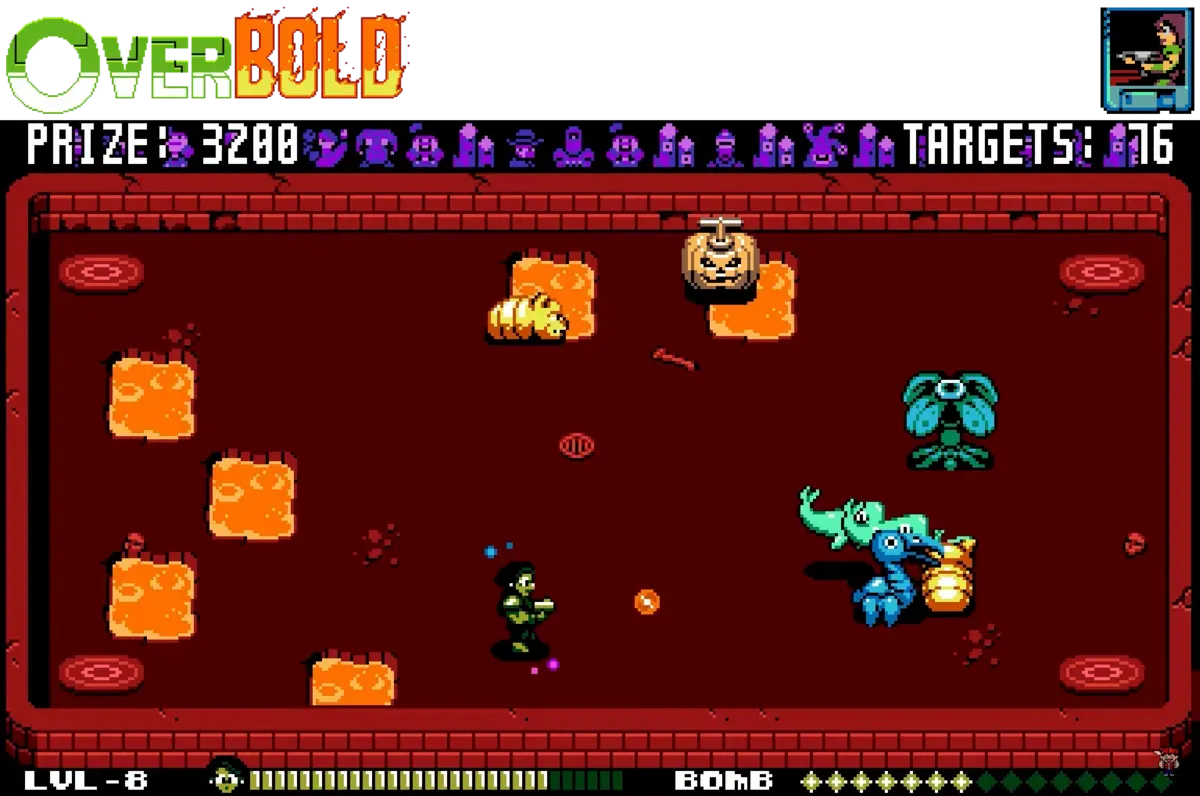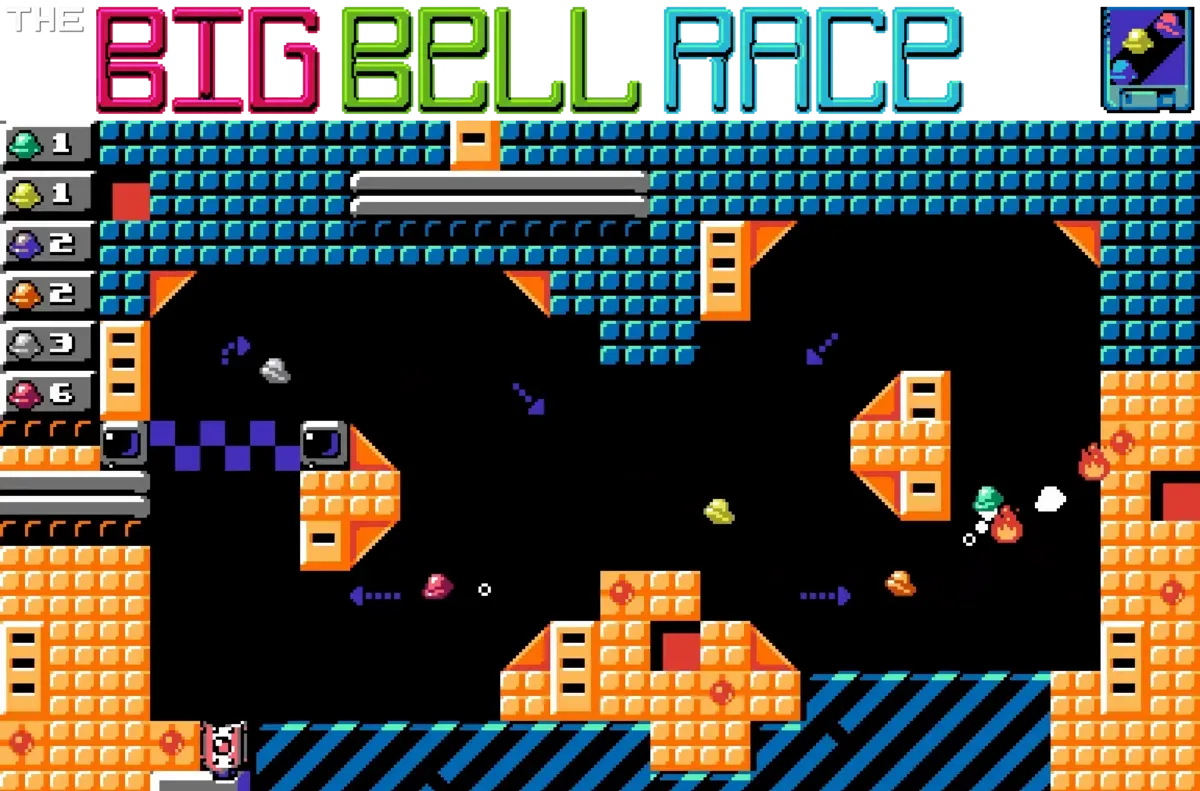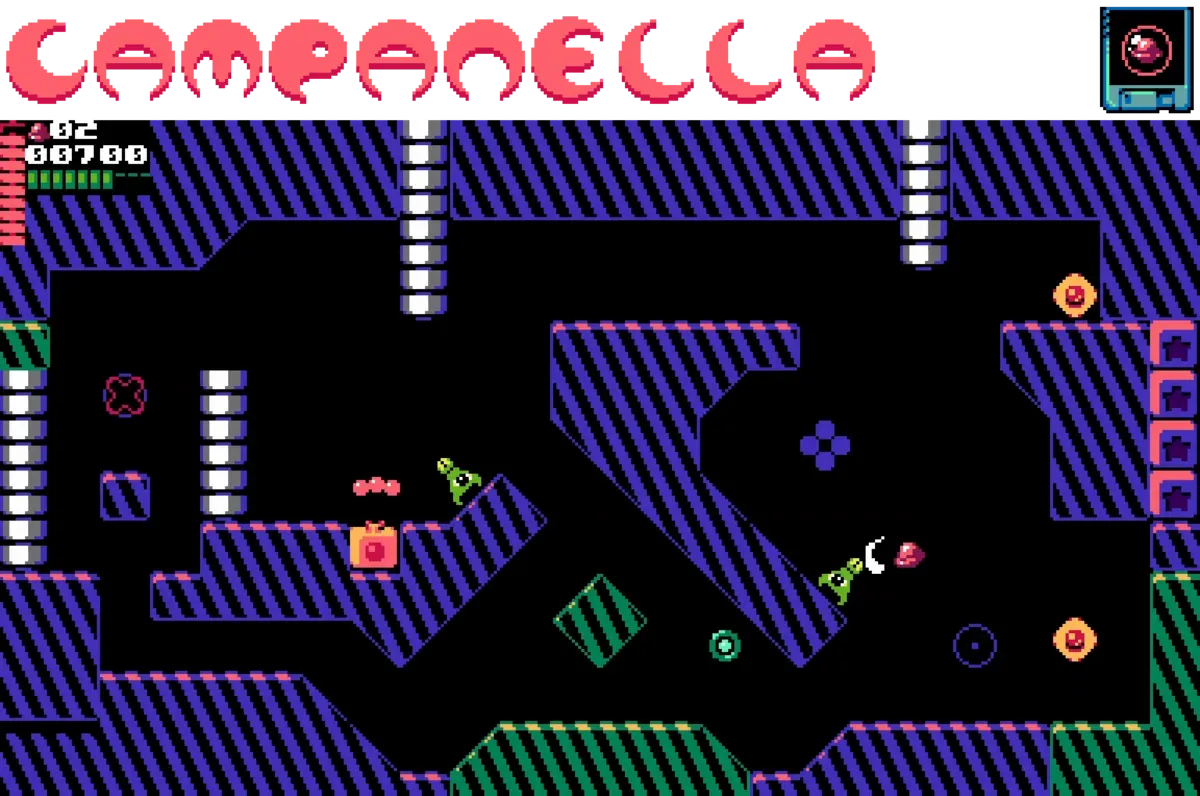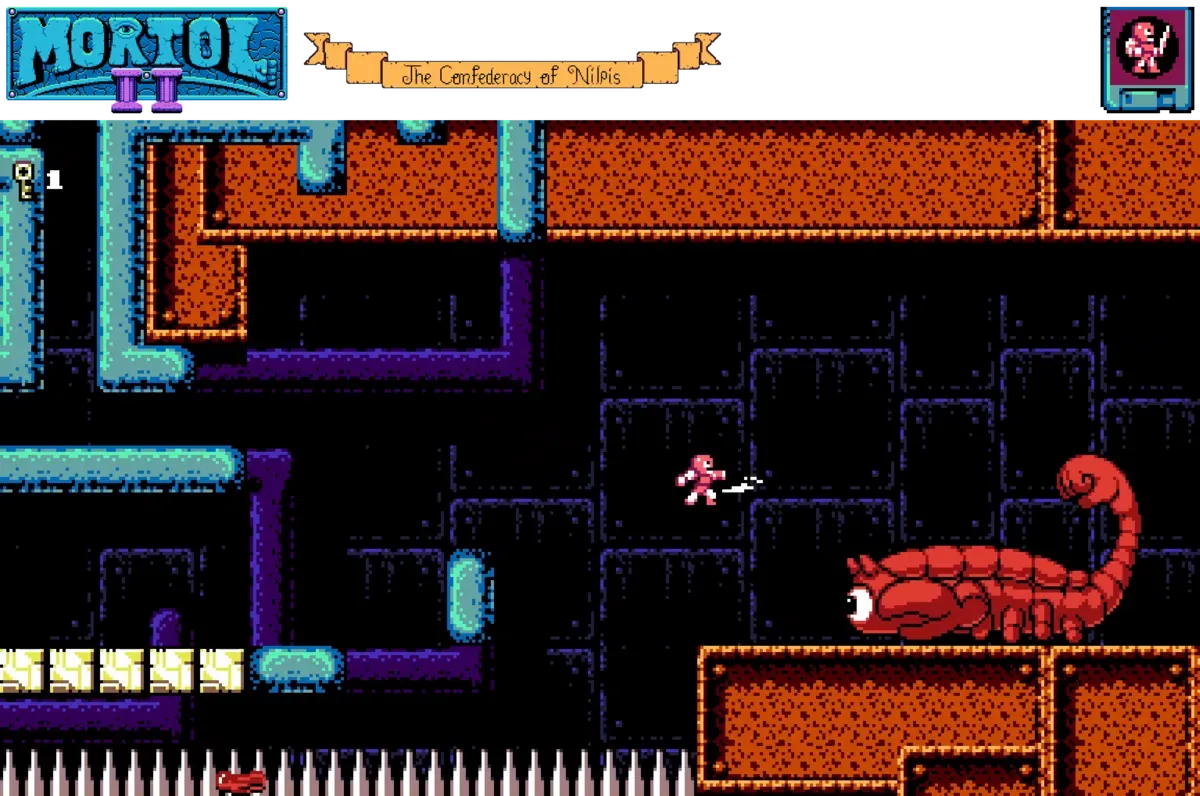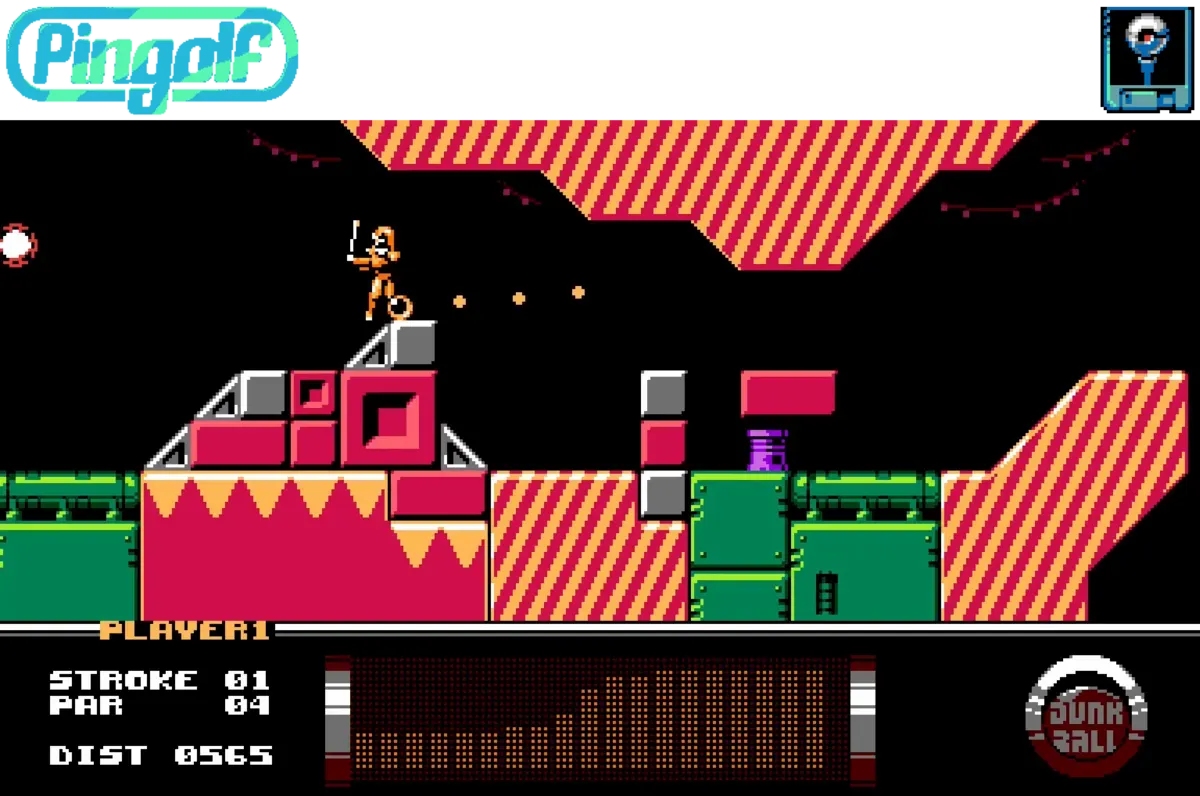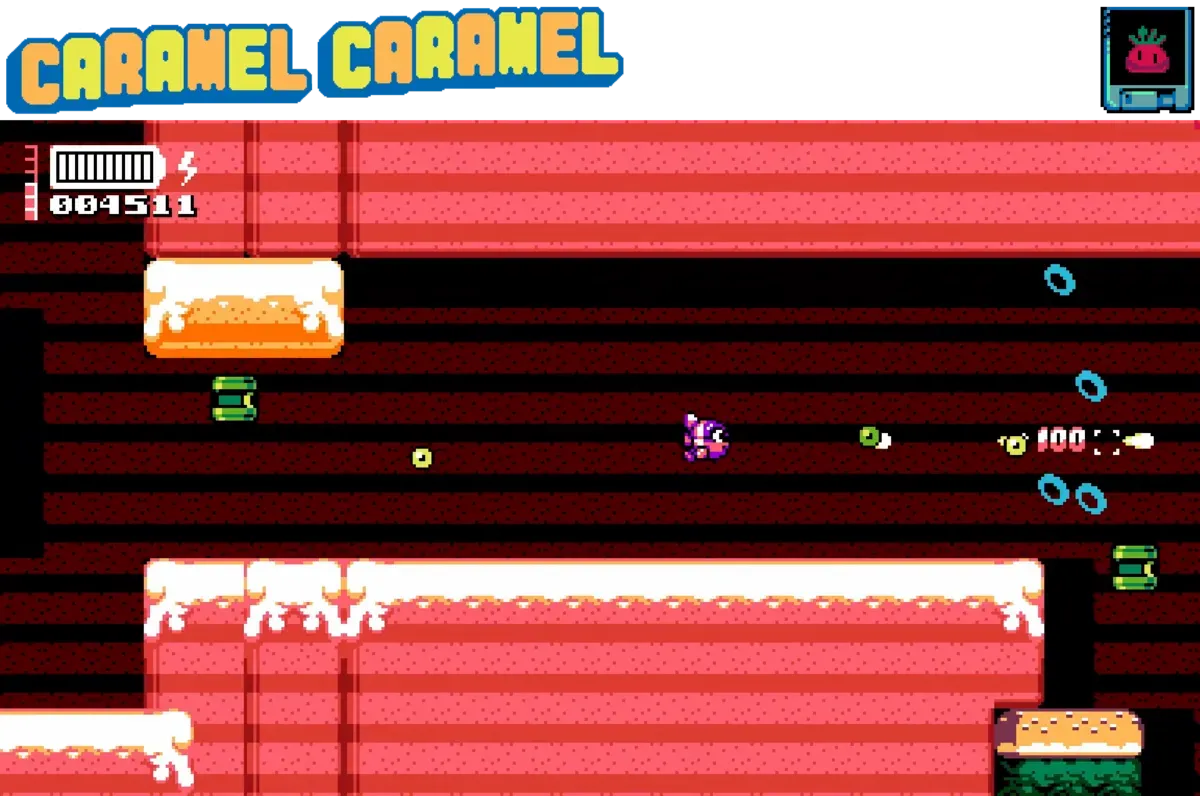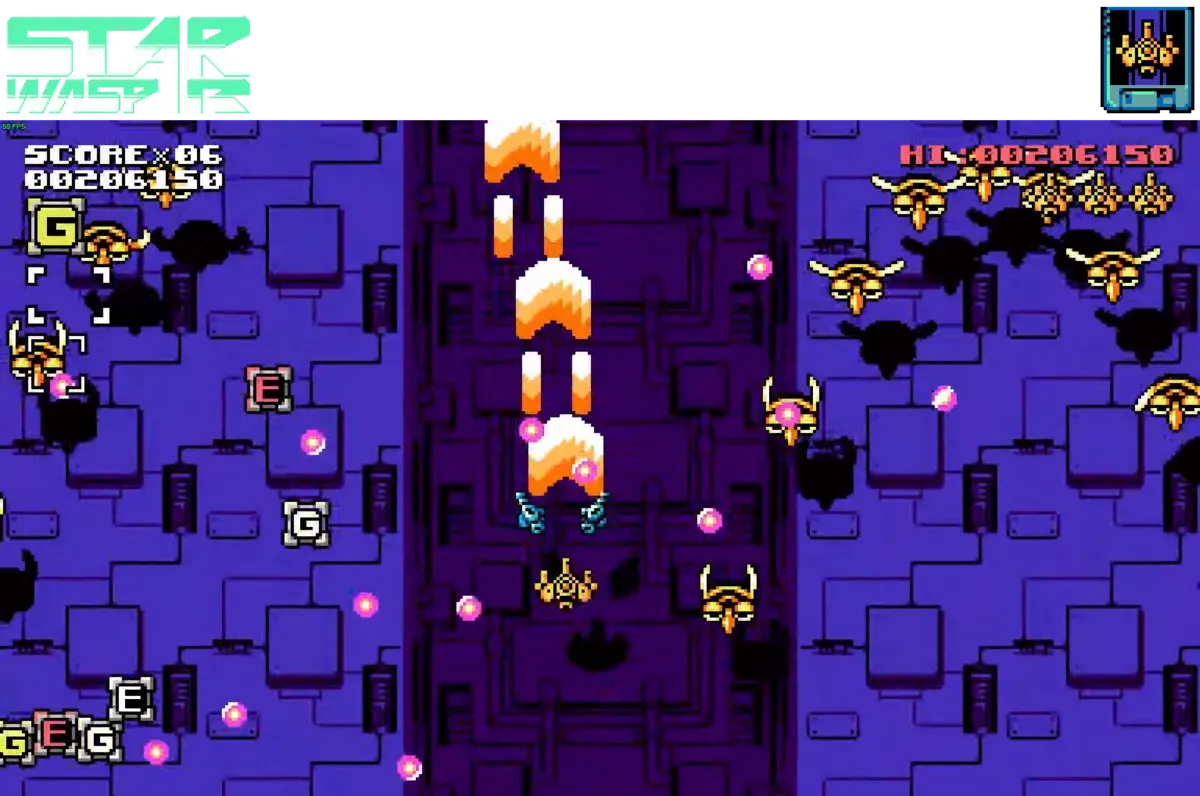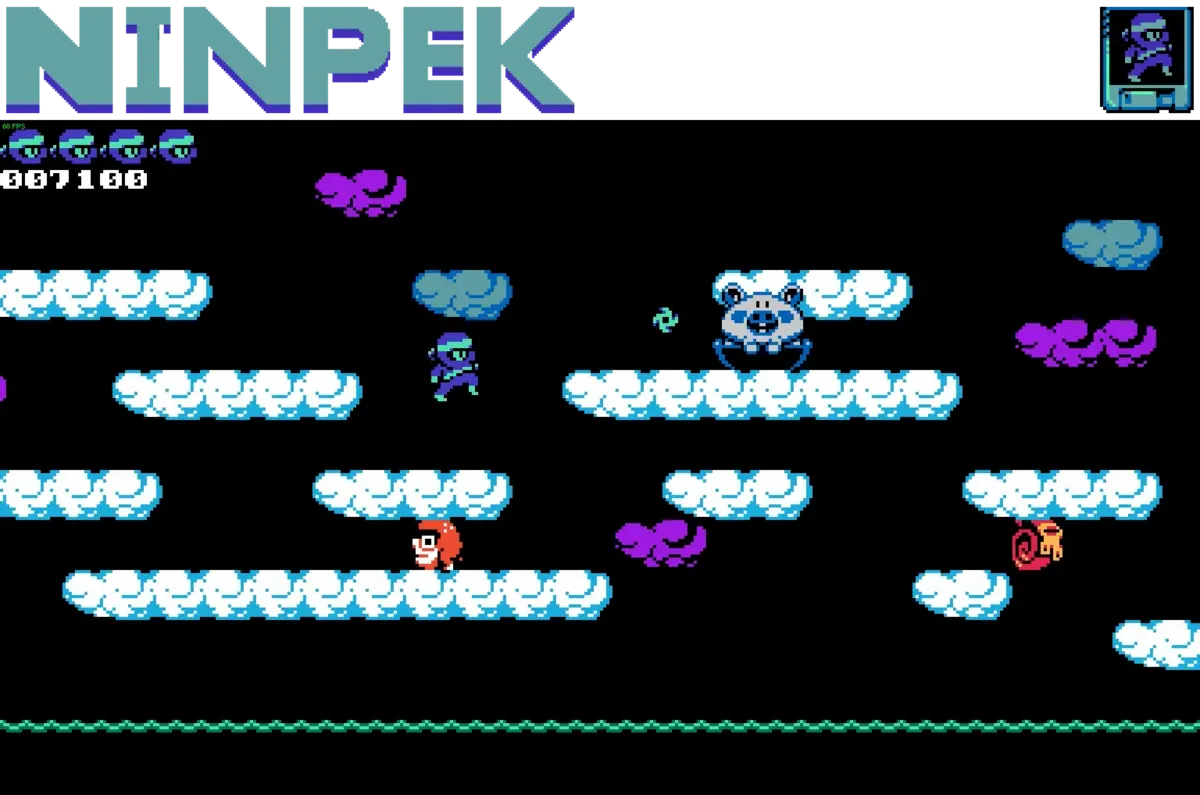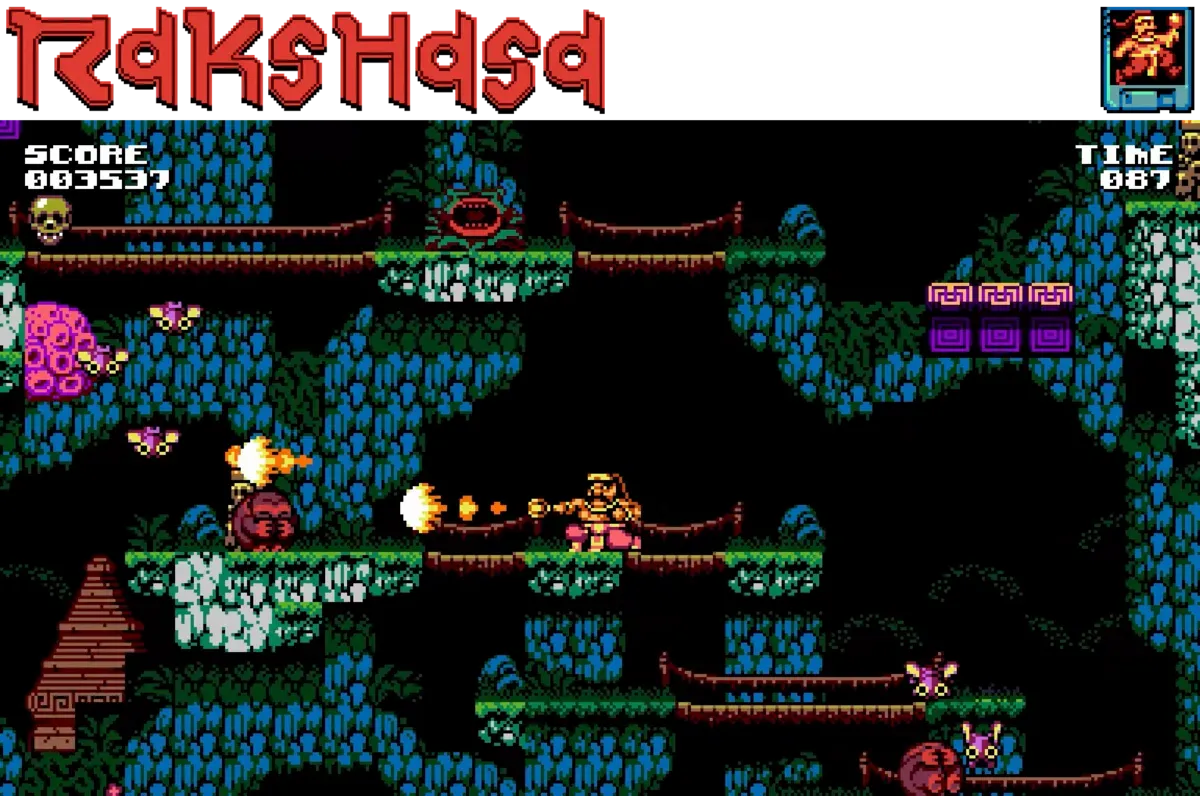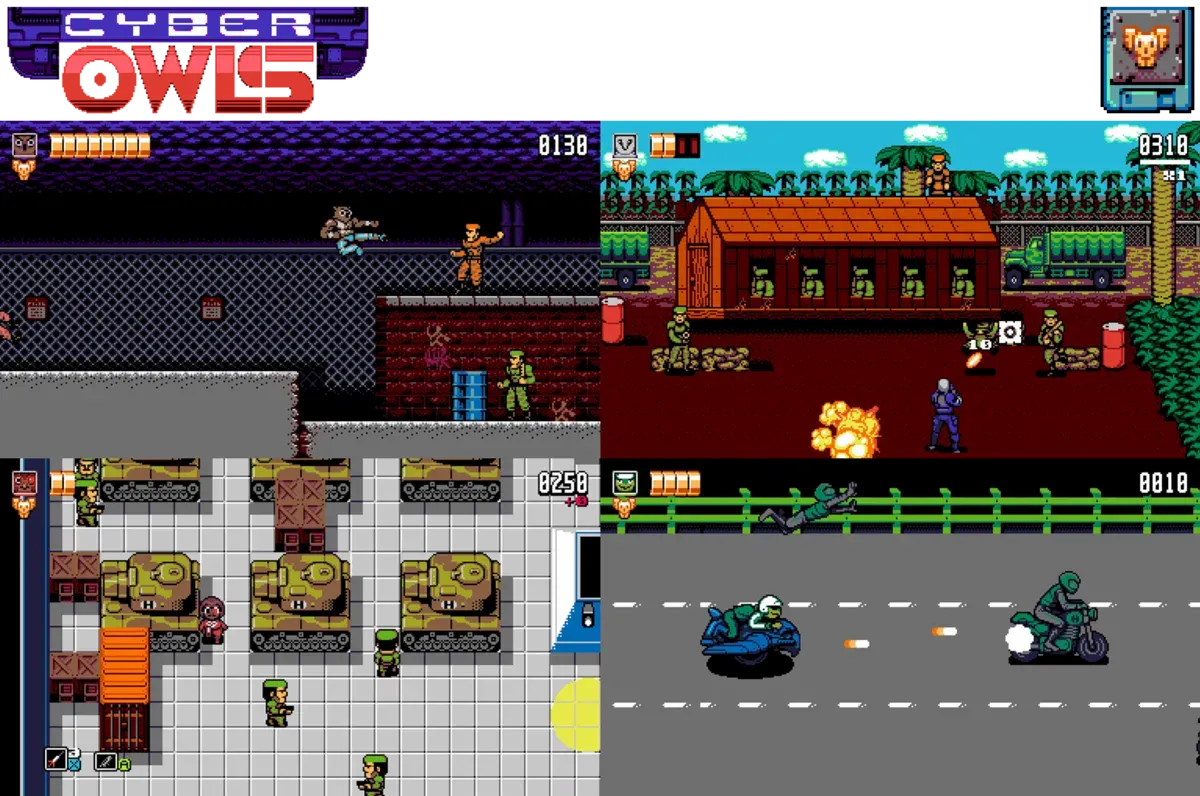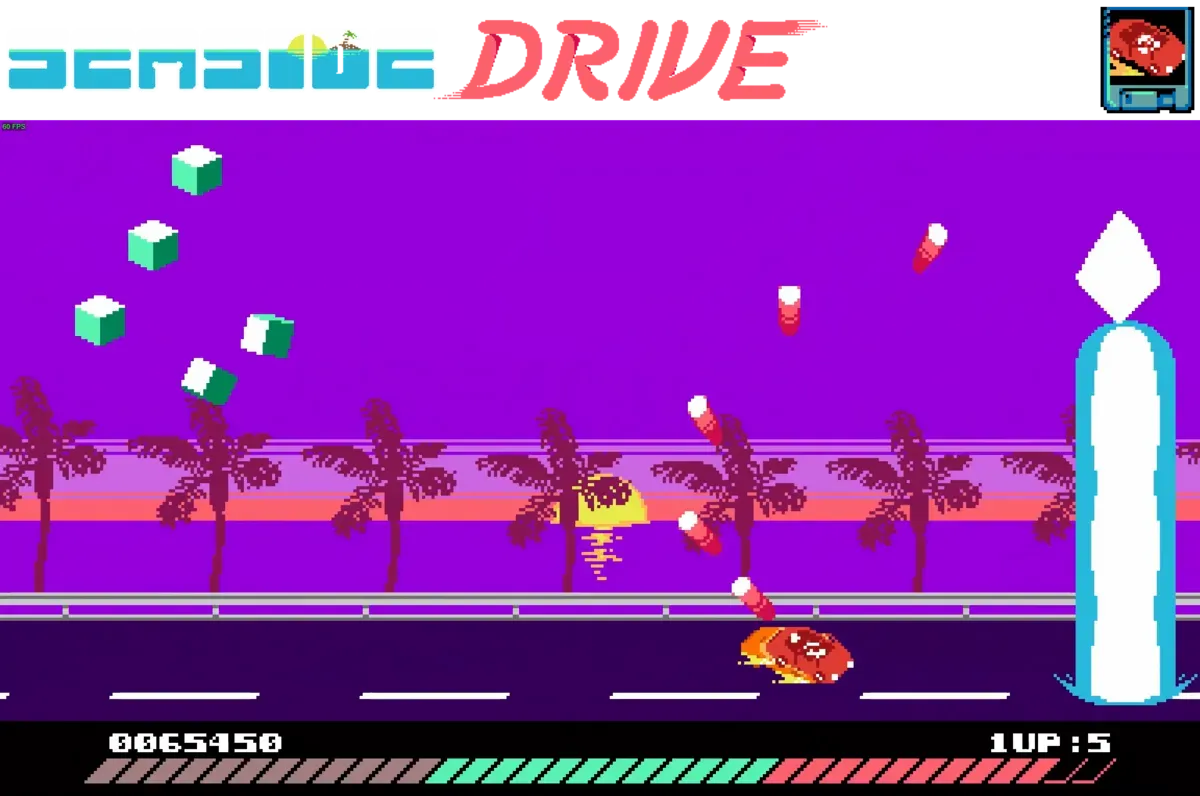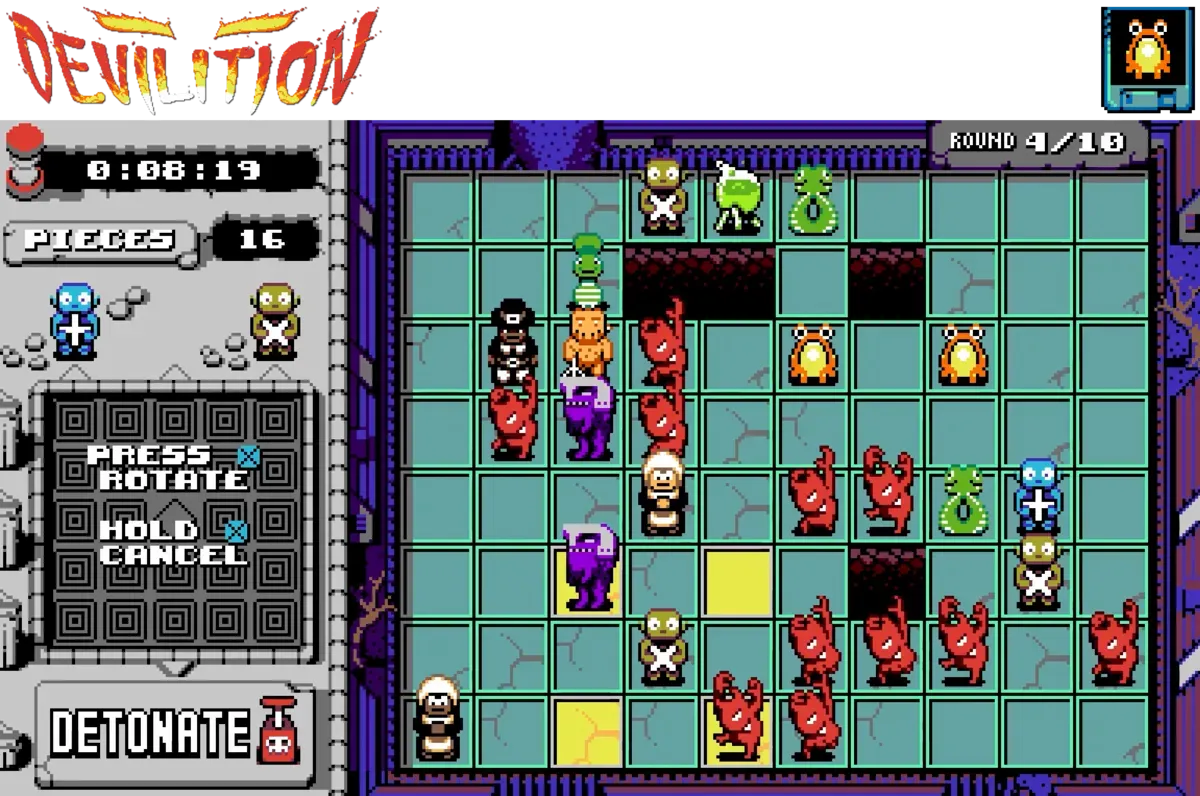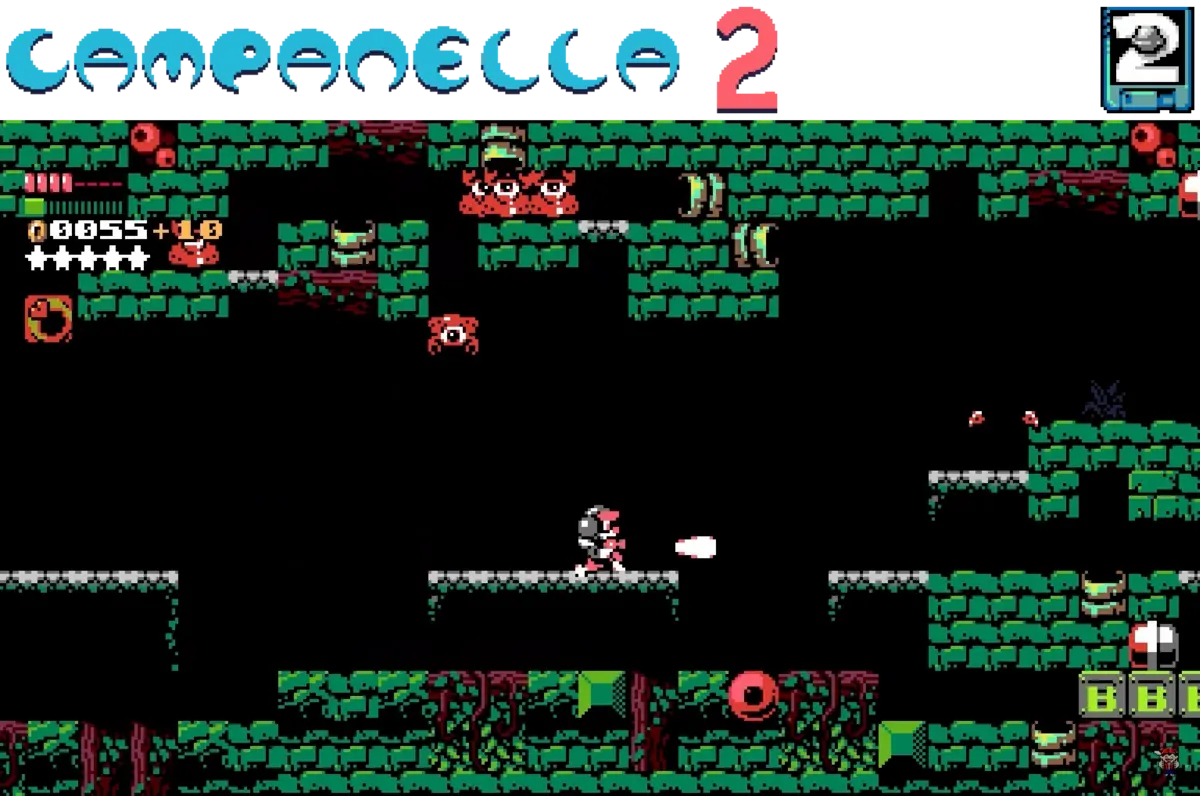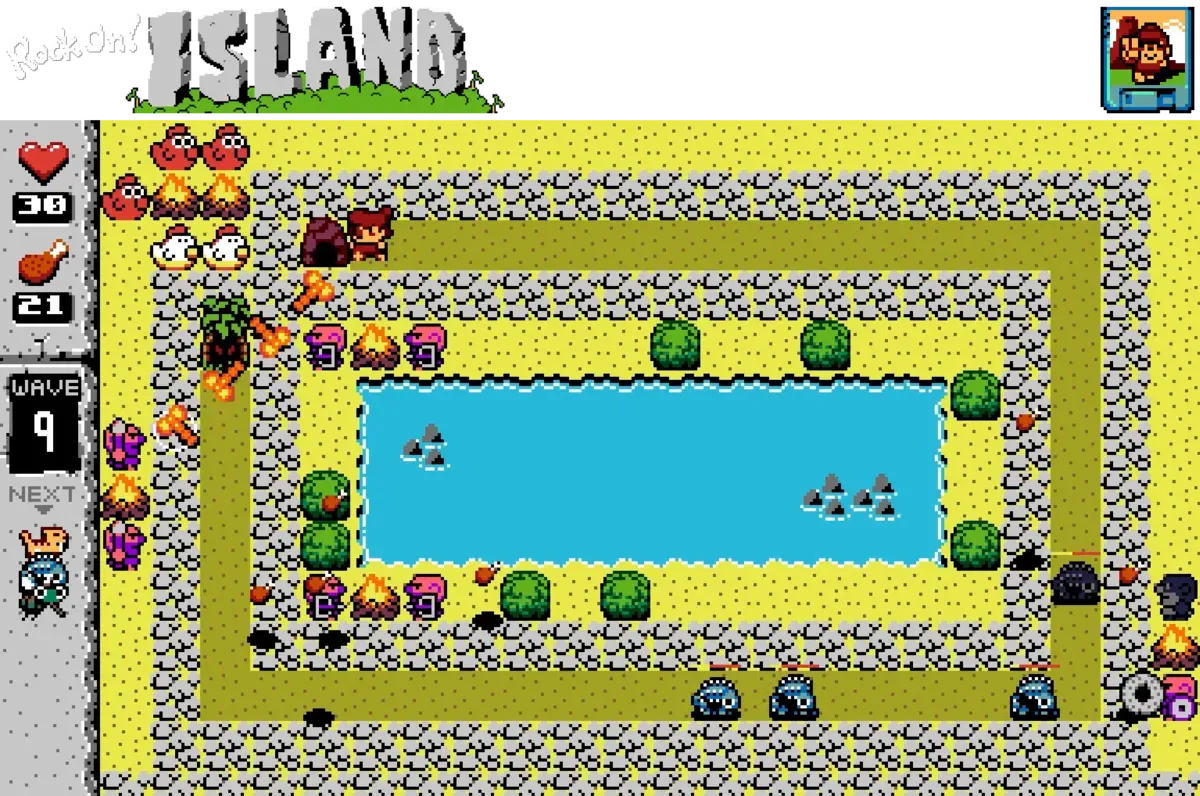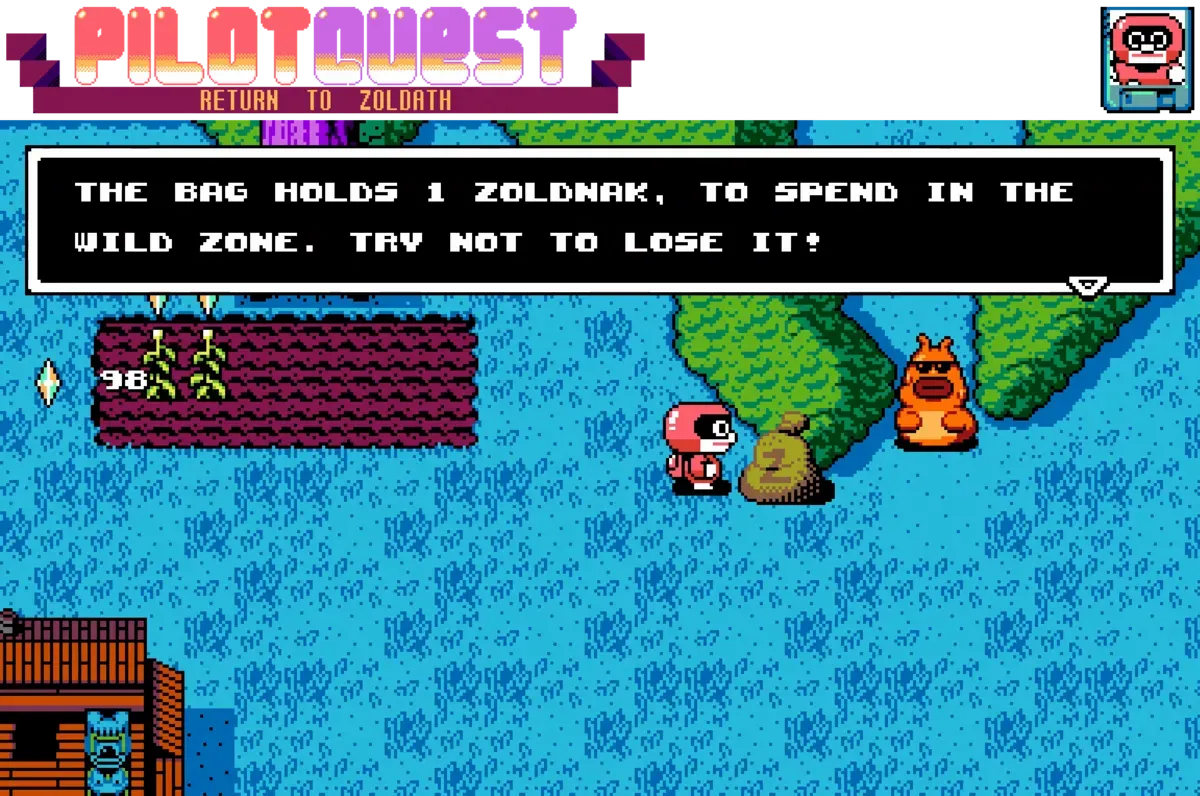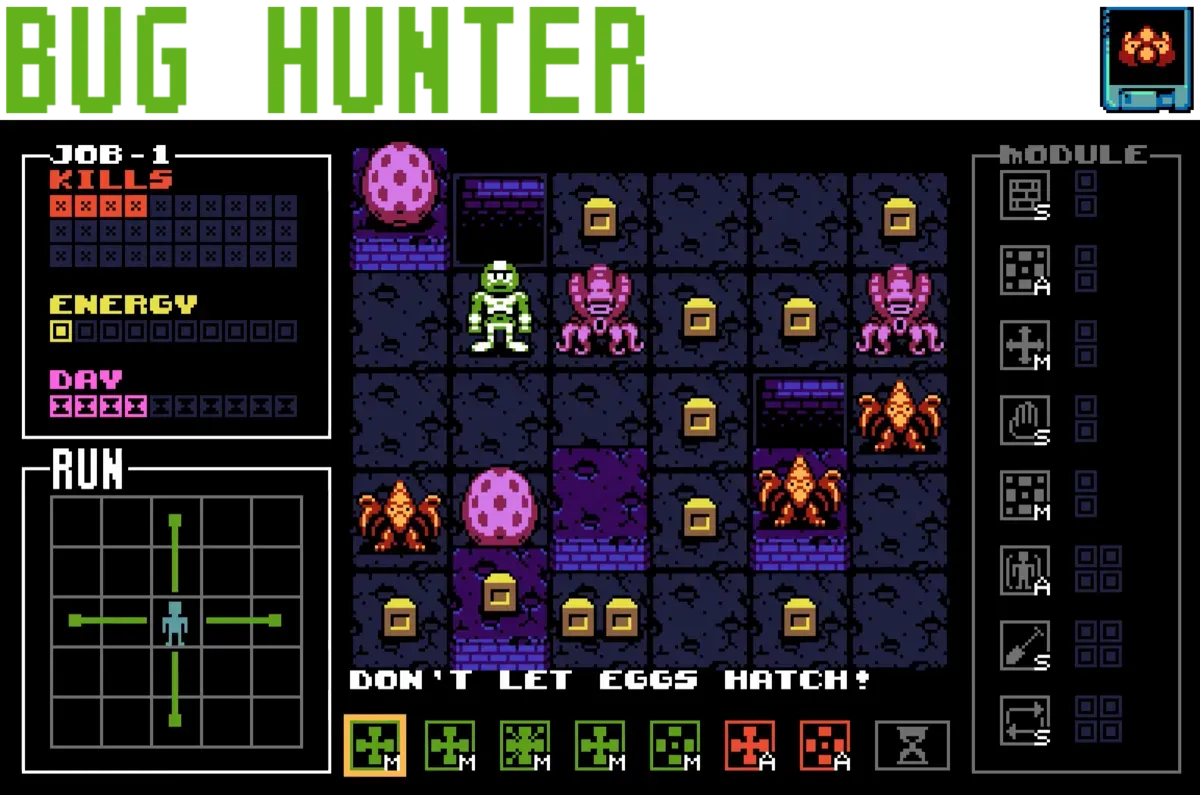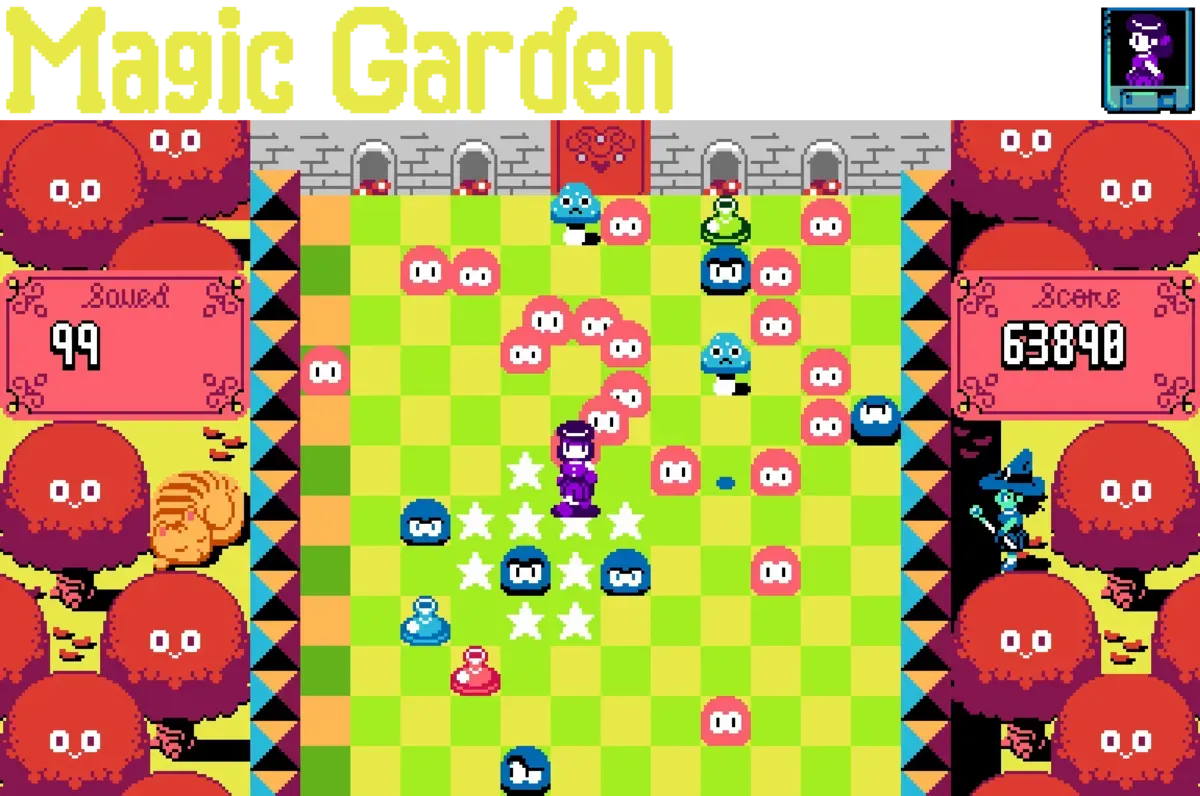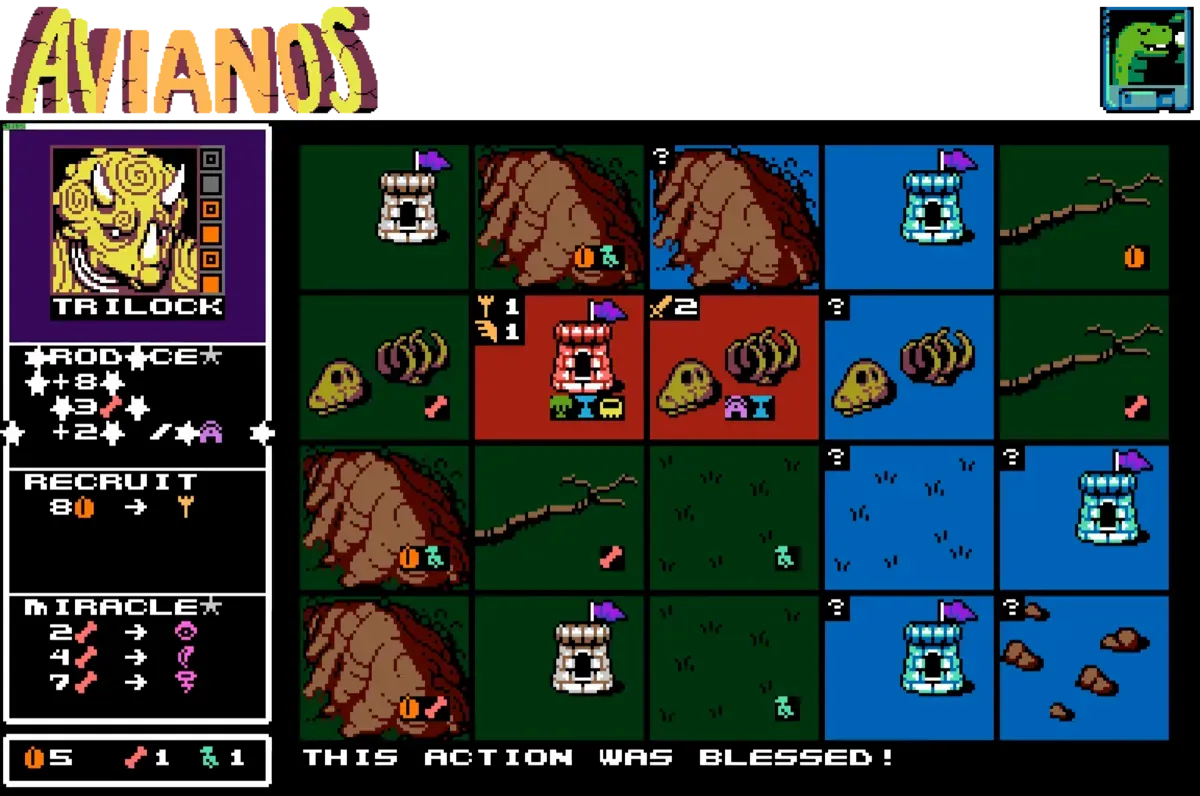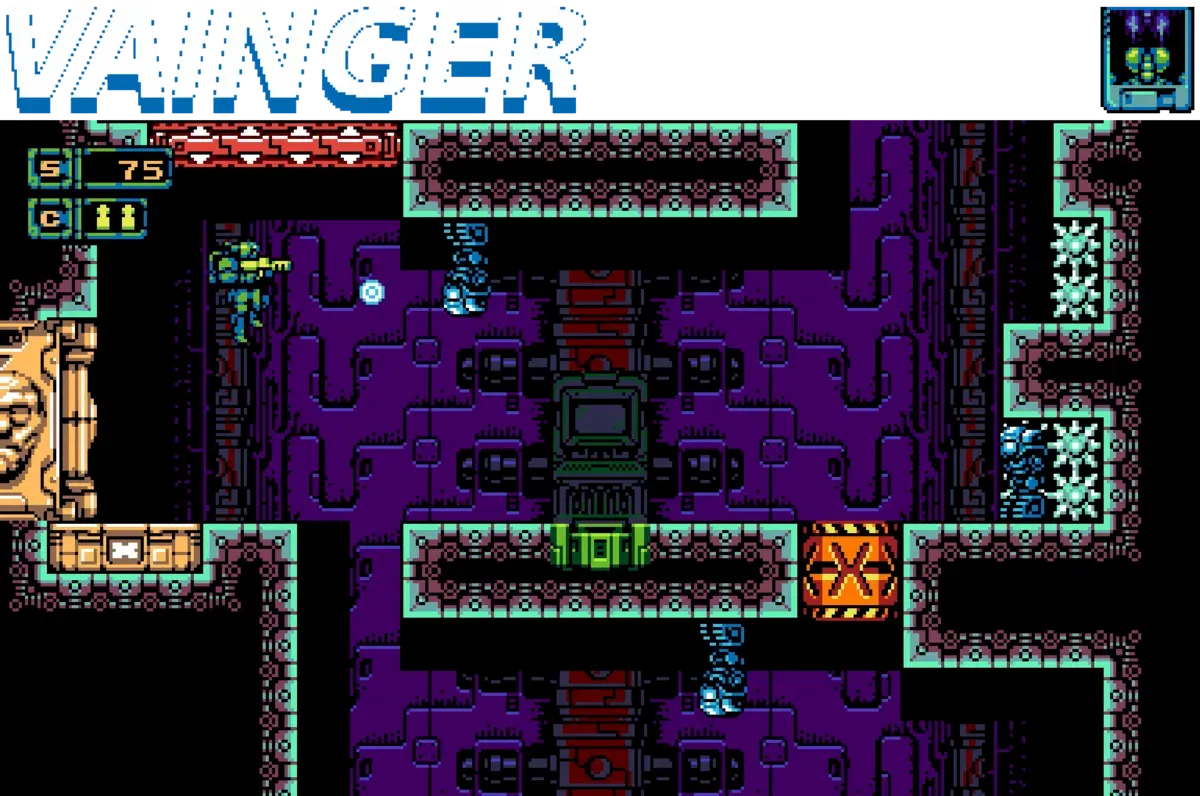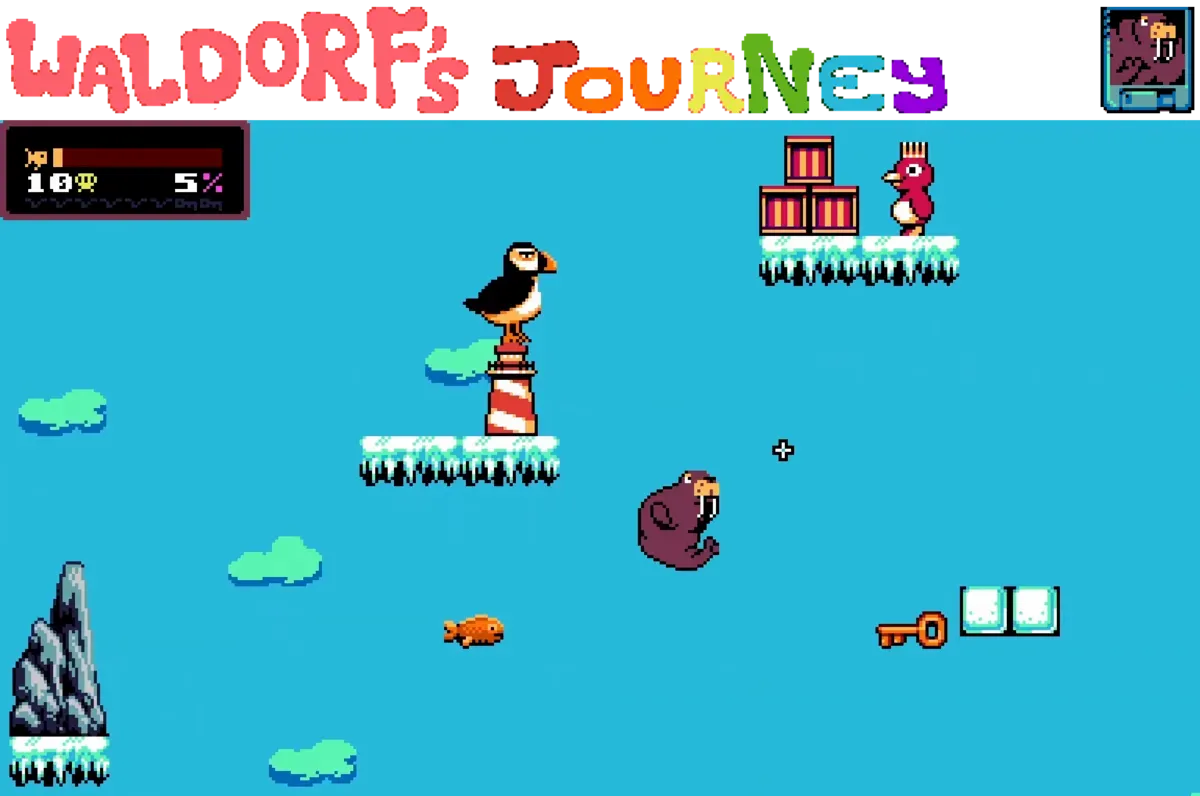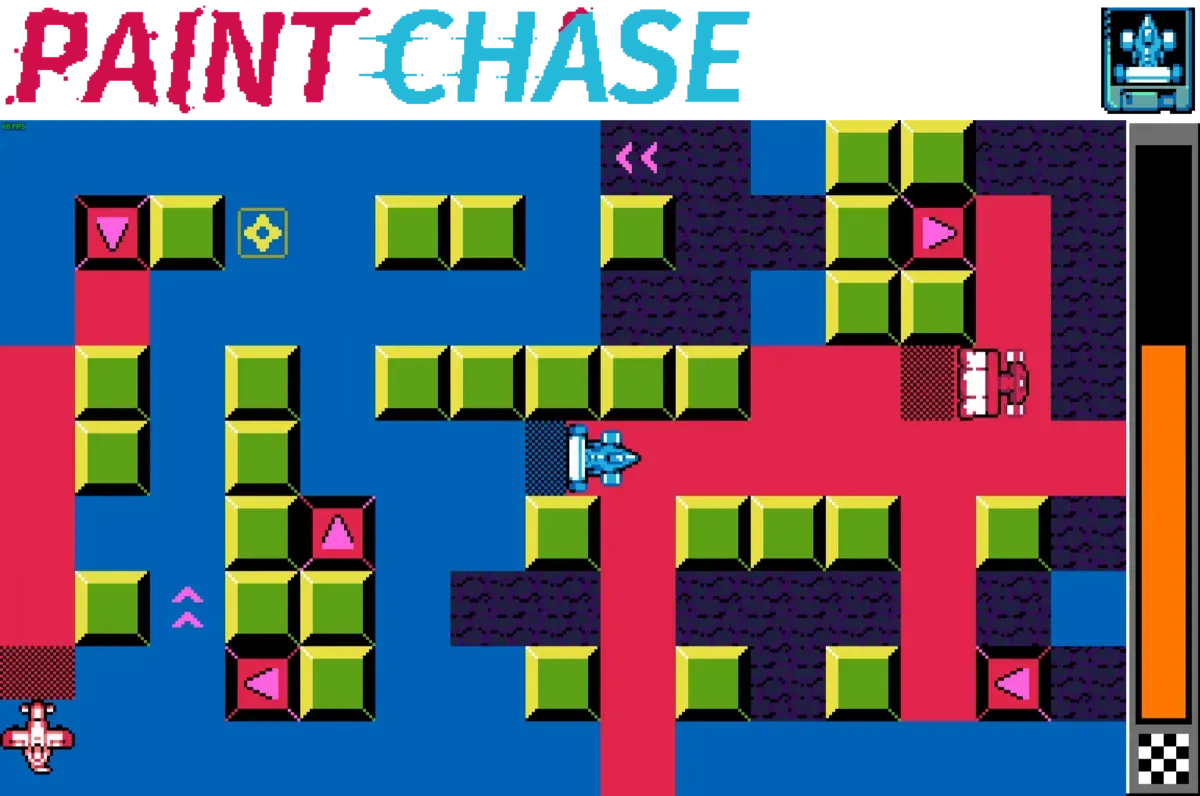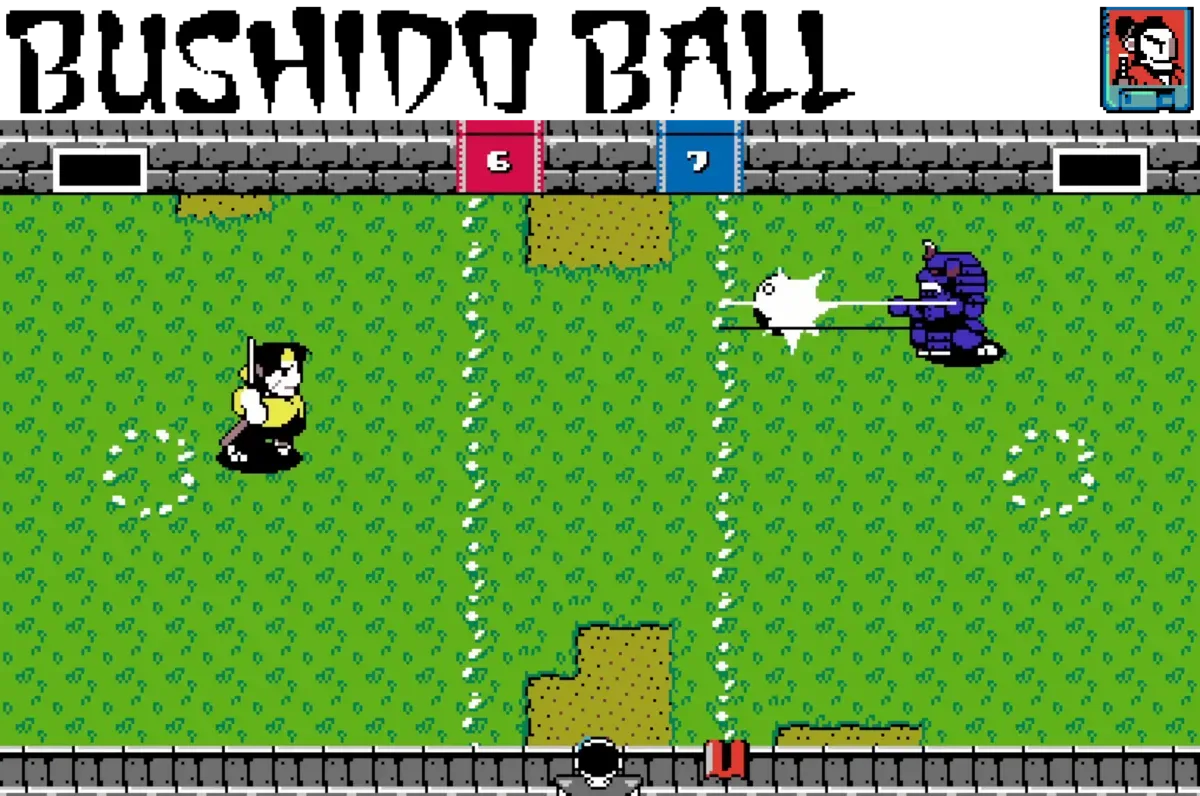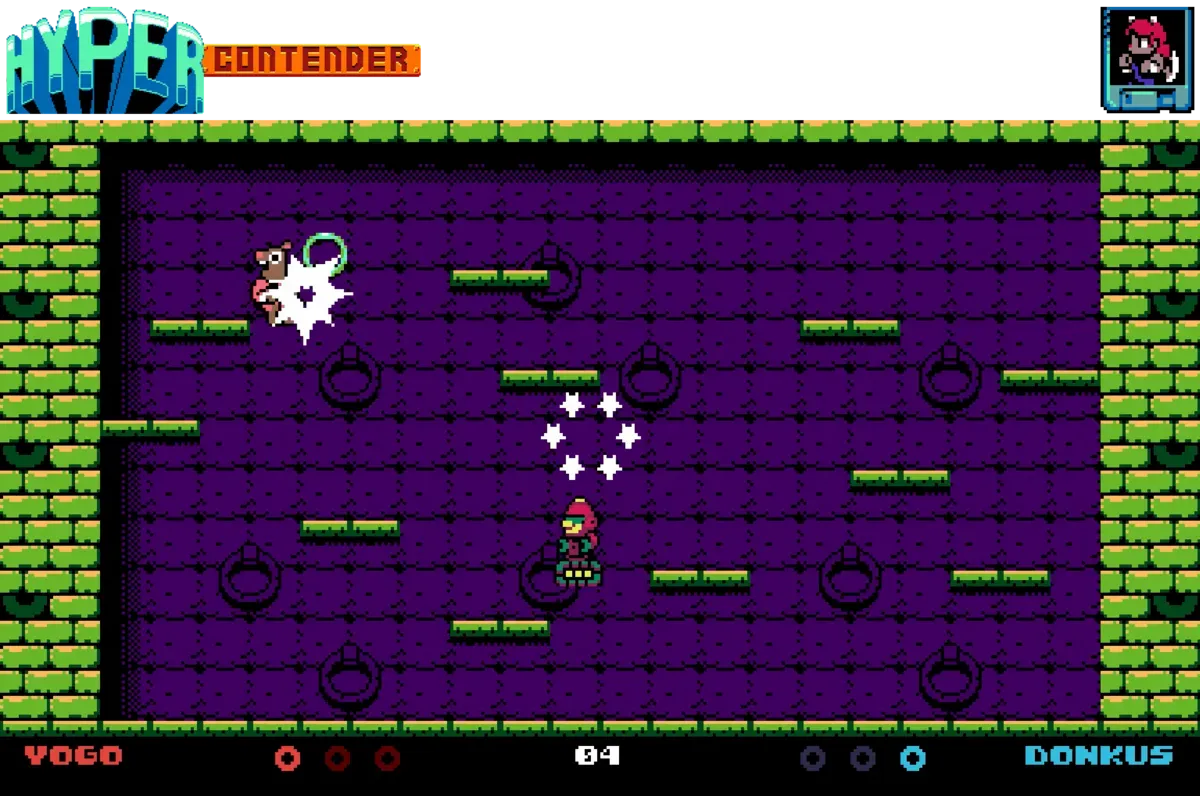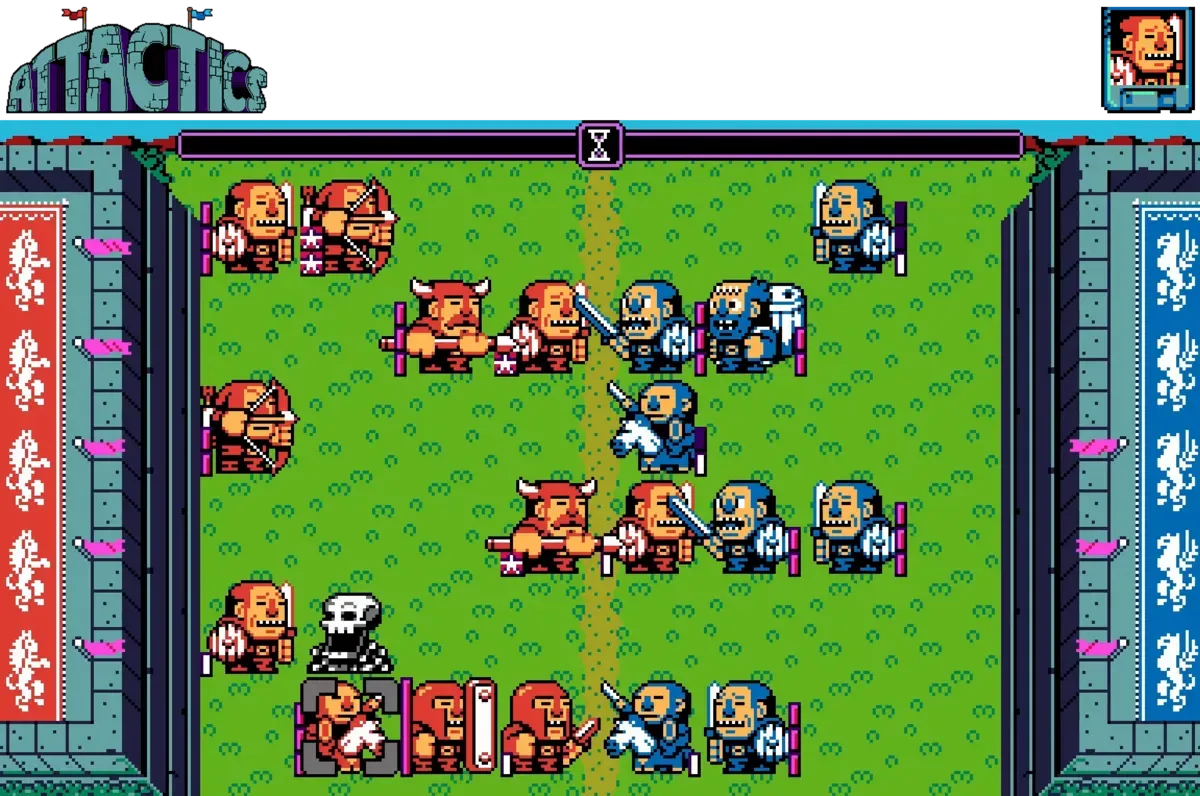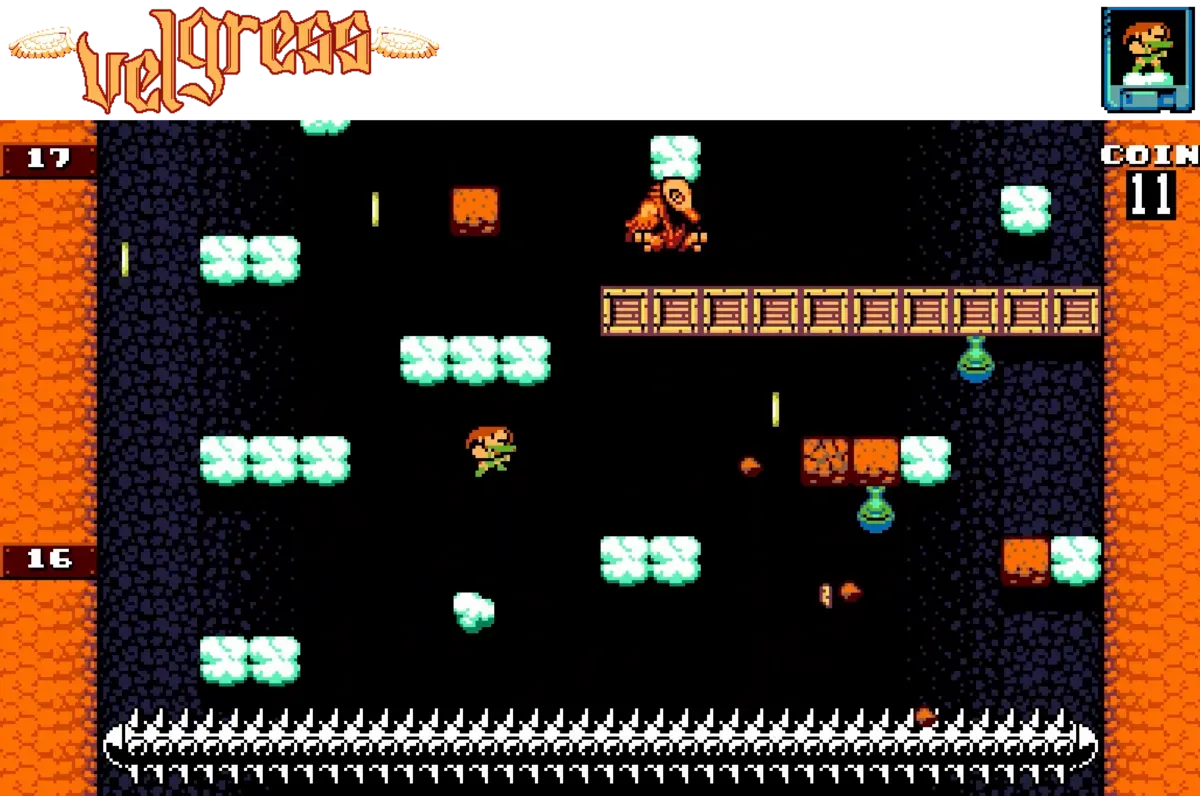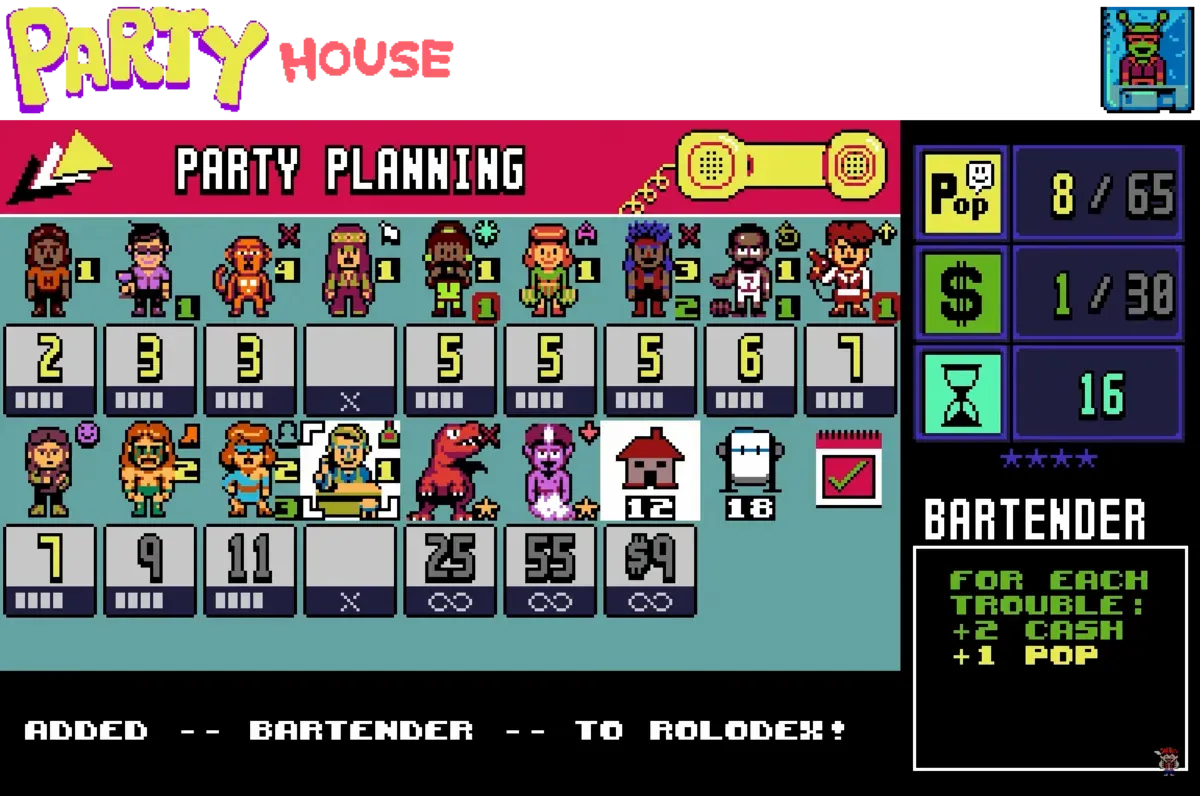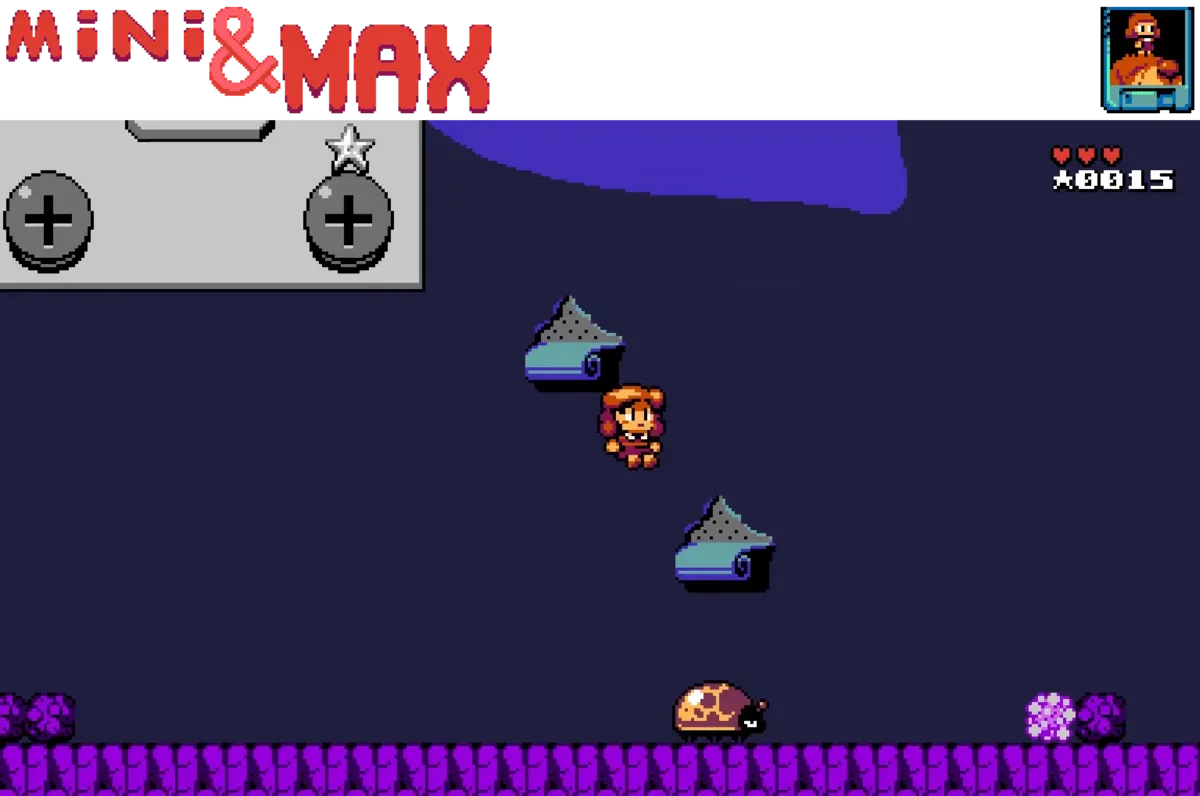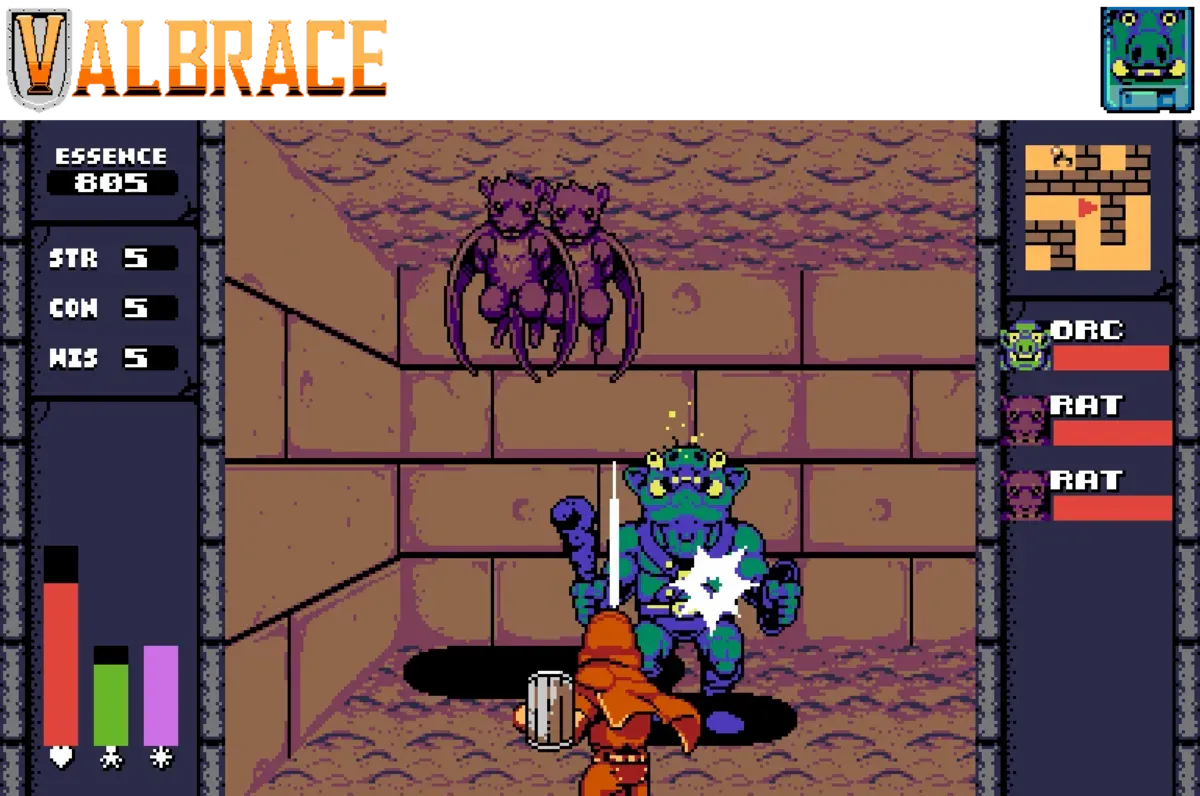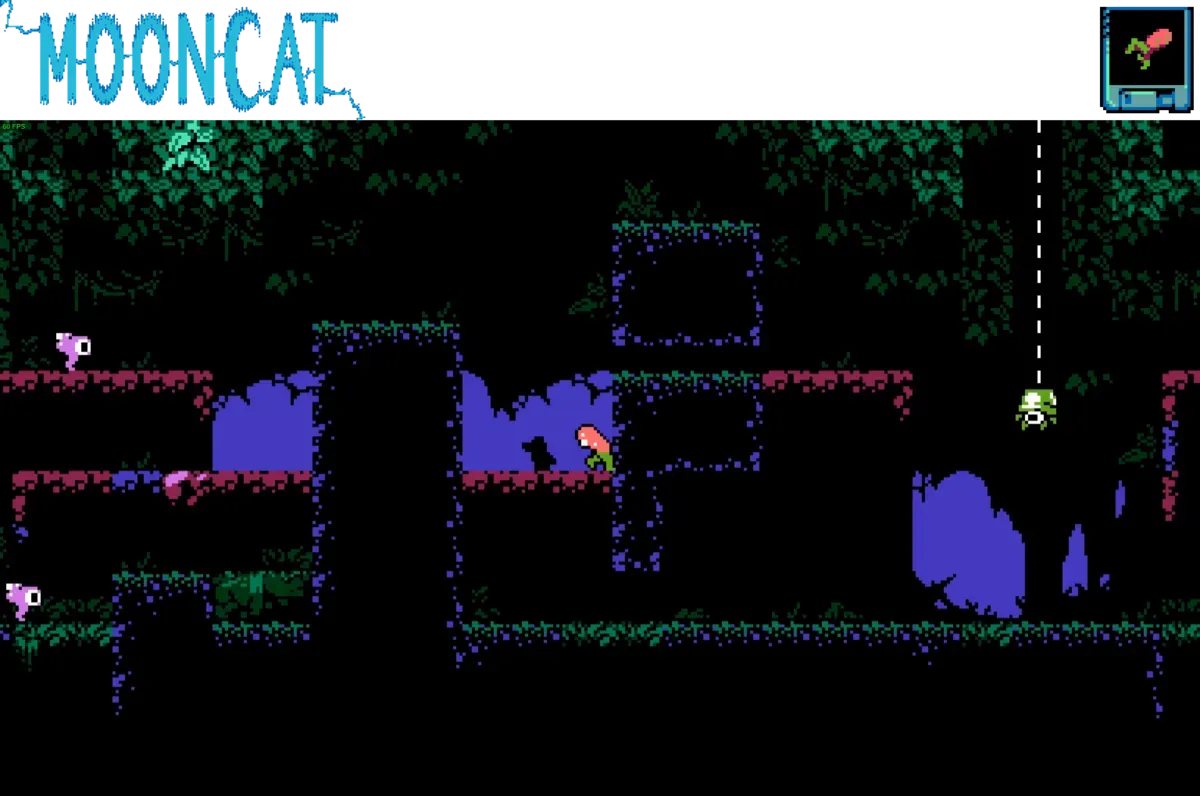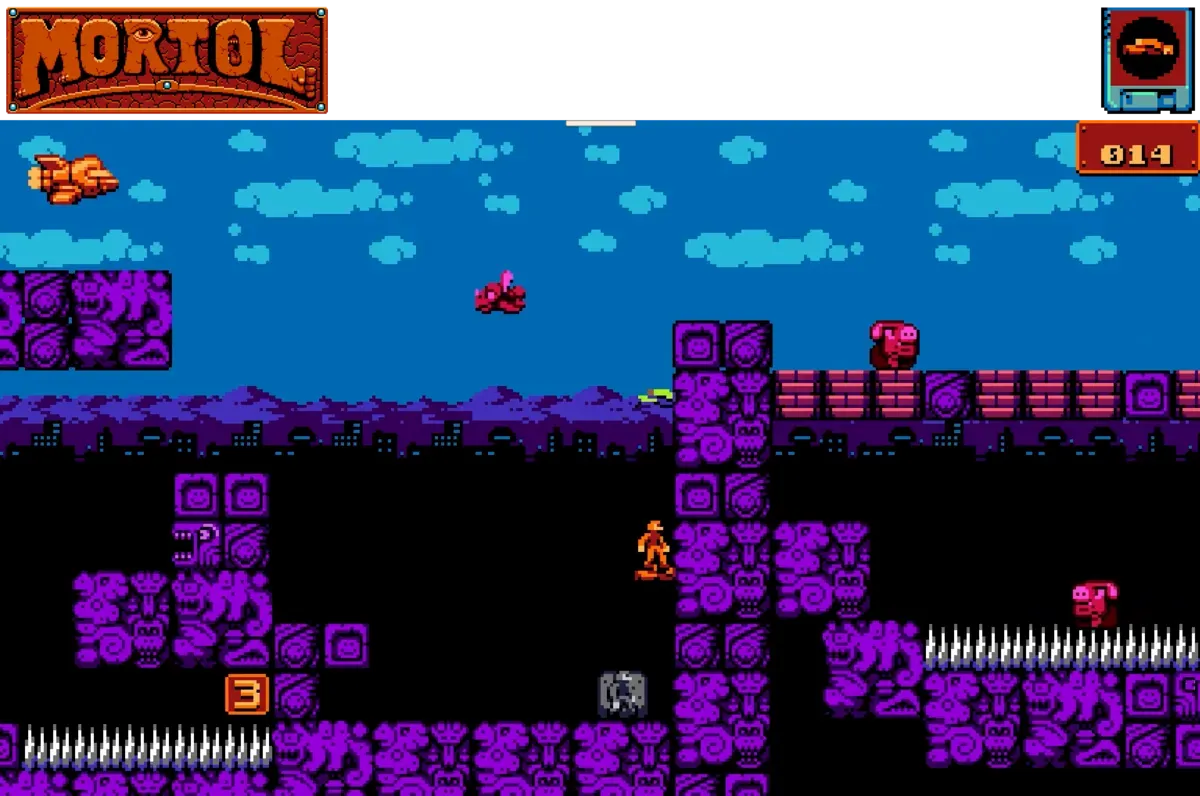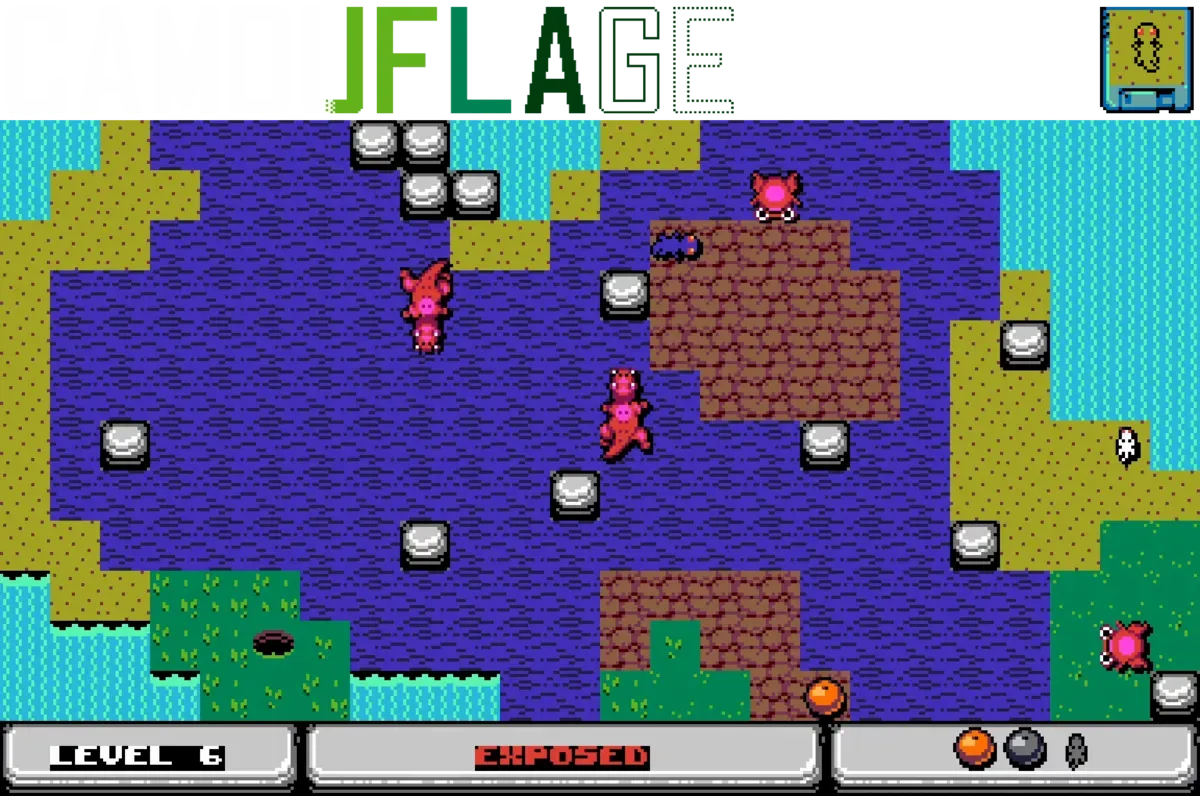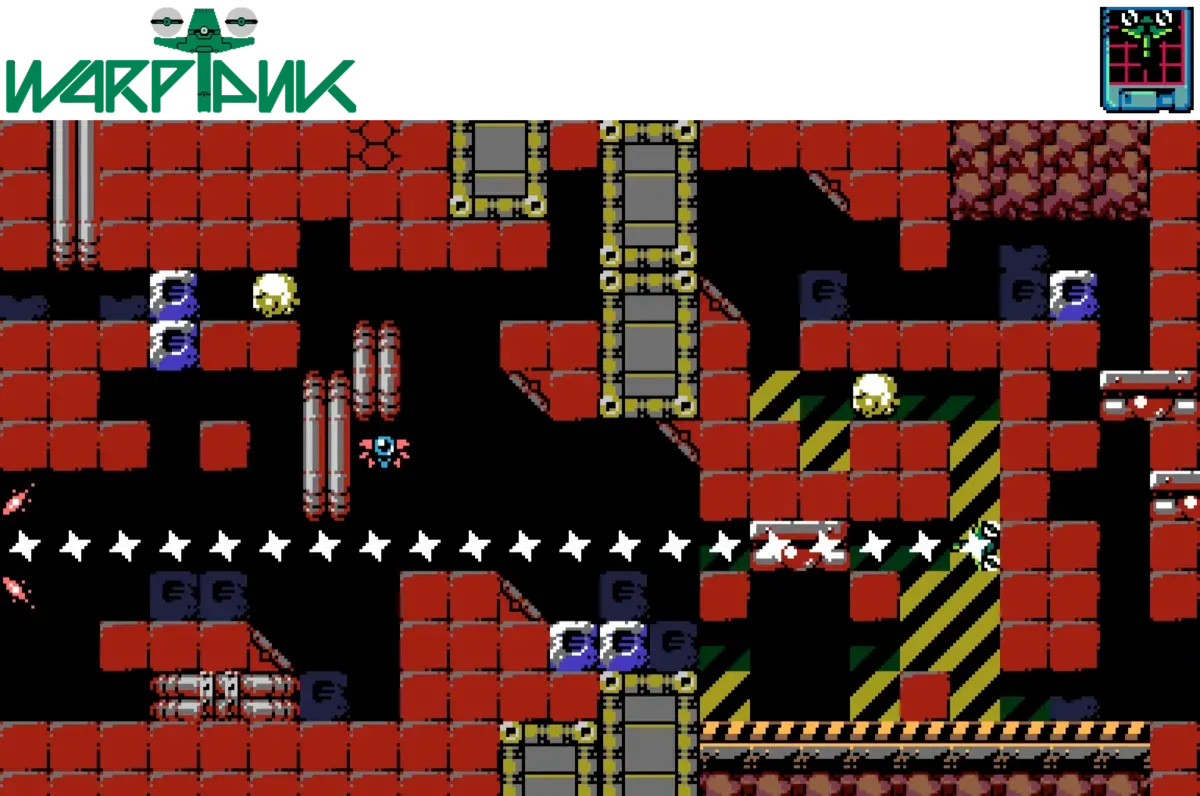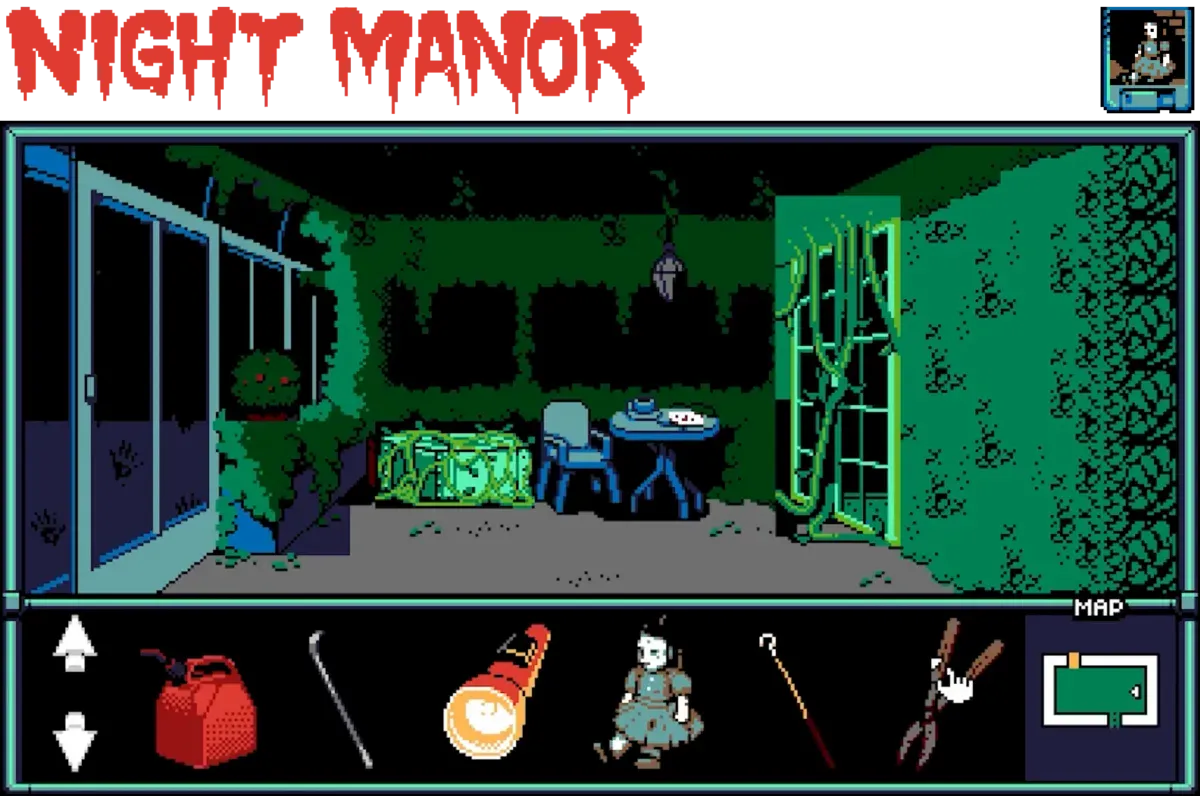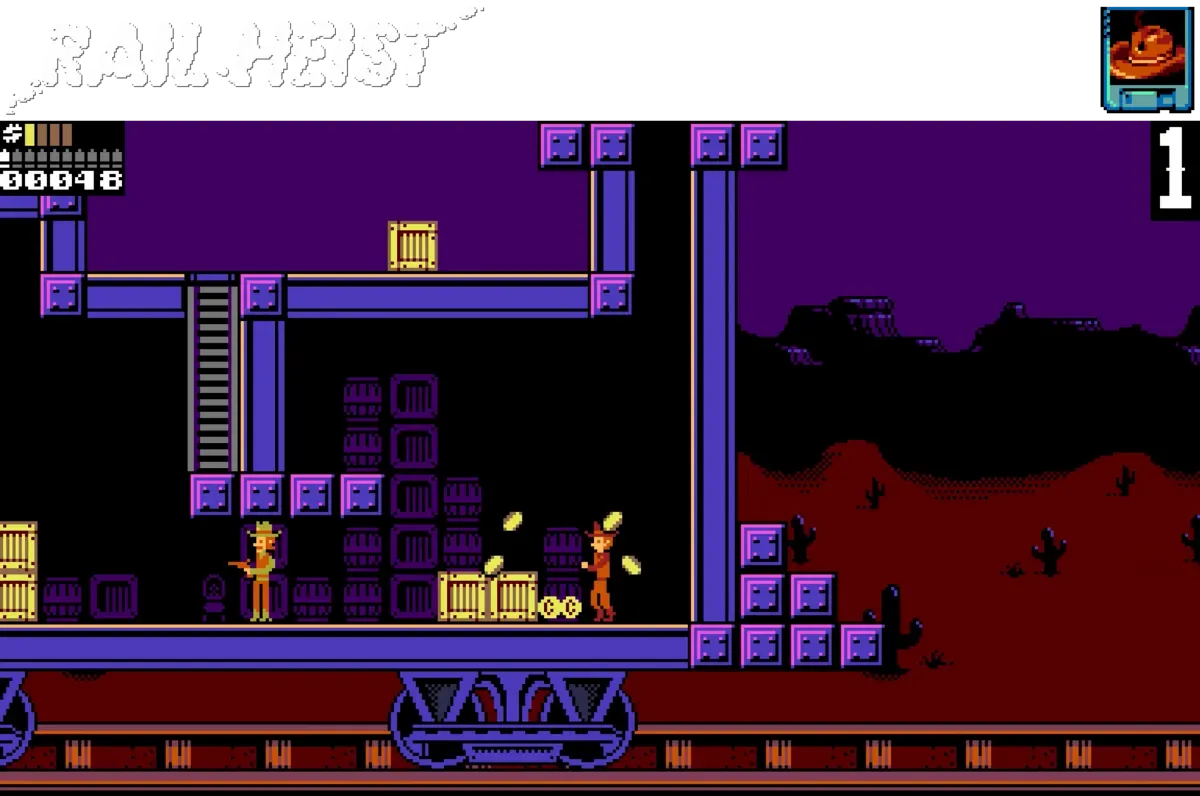Fans of UFO 50, don’t get too excited, I have only put like 26 hours into it.
This is not one of those reviews where some guy with 1000 hours, 100% completion and 10 dollars from Kotaku1 painstakingly explains why Onion Delivery actually isn’t a complete piece of shit.
This is a lazy, highly negative containment post, so I don’t have to dirty the monthly review article with mini-rants about fifty different things no one but UFO 50 players care about.
A quick intro for the noobs: UFO 50 is a collection of fifty different faux-80s pixel art games, completely different genres (for the most part, more on that later), making up an entire collection for a fictional console, with recurring characters and assets, a few sequels, etc.
The Steam description says this:
These are NOT minigames or microgames! Although the size of each game varies, every one is a complete experience, from its opening title screen to its ending credits.
The Steam description is lying. Yes, the size of each entry varies, from minigames to real games. Magic Garden is what we would call a minigame if it were included in a full experience, and it’s not a rare exception.2 We have lower standards for Arcade experiences, but I’m paying 25 dollars—okay actually that’s two quarters per game I guess it does check out.
Anyway, the description continues to obfuscate things by bringing up how it “modernizes" the gameplay. Yes, kind of, but anyone who was alive during a certain era knows the dark truth behind UFO 50’s mini-macro-games…
Many of them are actually based on the early 2000s Indie Freeware/Flash Game zeitgeist, not the NES era! There’s no modernization there, they are actually demakes with a twist.
Don’t get me wrong, that’s a good thing, and it only reaches the level of ripoff a couple times, they mostly made sure they each offer a twist on the original. I’ll go a bit more in depth on what references what, whenever I noticed something, but here’s one of the most obvious ones as an example:
As you see, there’s clear inspiration tacked onto Pac-Man, but that’s as far as it goes, it’s still a unique game.
Now that you know what UFO 50 is, let’s move on to what you’re here for, the full list of entries3 from worst to best and some commentary on each.
The Bad
This category has nothing to offer. Either bad-on-purpose joke games that diehard fans will nonetheless defend to death, or potentially good ideas that were executed in the worst ways possible.
50. Combatants
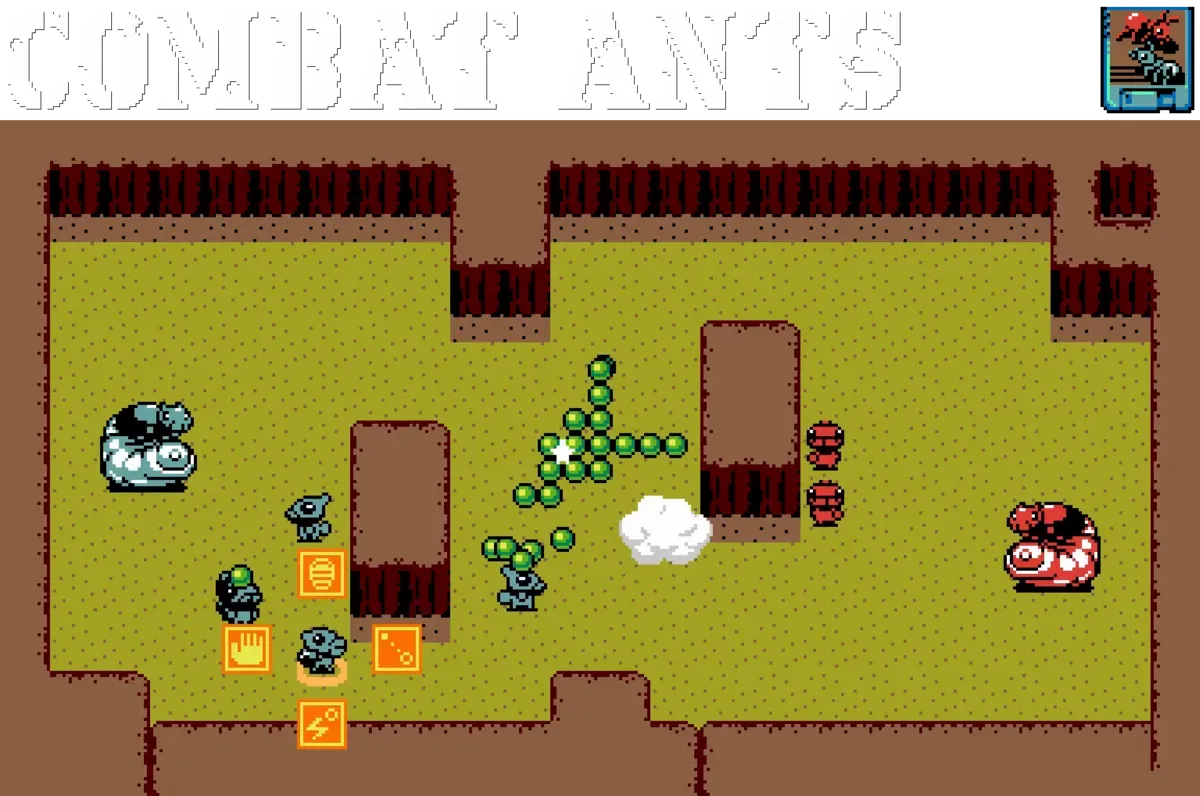
Scraping the bottom of the barrel here. You can feel the developers’ desperation in trying to implement a twist on the RTS formula to get one last subgenre in. You control one ant, and can carry food to the queen to generate more ants, which you can then order around.
Badly. The AI is so terminally stupid that ants cannot follow you at all. You have to basically babysit them around the walls you see above, otherwise they’ll get stuck. The enemies will also get stuck. Even if the AI were perfect, the game is too simple to be fun, there is nearly no strategy involved. Get the food, make 20 combat ants, destroy the enemy.
Defenders (you could say drones) say it’s bad on purpose, that the “fun” of the game is actually in exploiting the “intentionally poor” enemy AI. I say one word to them: cope.
49. Golfaria
“What has science done?” is a fair reaction to this game.
It’s a golf-themed RPG, but there’s no overworld/golf course split. You’re seeing how the overworld looks in the screenshot. You’re literally just using your limited strokes to get around, and need to hit balls into people’s faces to talk to them.
It sounds cool, but it’s not playable. Way, way, way too hard from the start, and just like real golf, it’s easy to get stuck with a points deficit that feels unrecoverable. The overworld is too zoomed in, and teleports add to the labyrinthine feel of it all, to the point that even having checkpoints doesn’t really help.
I think Golfaria could potentially be cool as a fully featured game and not part of a limited retro collection. What I’m seeing here is just terrible.
48. Fist Hell
Fist Hell is ironically unique within the collection in that not only does it not add anything at all new to the genre it’s aping, but it’s also entry #12558 in the “RETRO 8BIT BRAWLER” category on Steam. The controls are average, and playing it isn’t actively painful, but that’s all I can positively say about it. Wait no, a dog can also help you sometimes.
47. Onion Delivery
Did you ever play Crazy Taxi? Let’s add tank controls to it and an overhead perspective.
That’s it, that’s the game. The suspiciously-taxi-looking delivery car goes really fast, there are a ton of obstacles everywhere that destroy you in one hit, so it’s not only lazy, it’s also insanely hard.
Defenders (you could say ogres) claim the point is fighting the awful controls and winning, like in the individual-limb-controlling-olympics-sprinting game QWOP. But it’s not given a unique control scheme, like Mooncat, it gets an existing, unfitting control scheme that the industry moved on from for a good reason, AND THEN you get a full other genre with its own challenges on top of that.
46. Hot Foot
It’s a dodgeball-themed reverse Windjammers, you try to throw beanbags into people instead of past people.
There’s another, more derivative ripoff of the Neo Geo sports game later on this review, and I’m sad to report the unoriginality helped it.
All the unique mechanics are fucking terrible. One old adage of game design is that no one enjoys losing control of their character. Hot Foot keeps an AI partner you can’t control next to you, frequently makes you fall over, and locks you in place whenever you’re “charging” an attack.
For a sports game, all these decisions make it feel slow, and the controls are generally clunky. The matches are hard and the AI hypercompetent. Even when you manage to win you’re not having much fun. It doesn’t even look good.
45. Lords of Diskonia
The screenshot already makes it look like shit, but we’re missing the other half of the game. The other half is very simple linear (literally, you can only go backward or forward) risk-or-reward strategy where you either focus on getting more troops or capturing territory faster.
Once you meet your enemy in the linear field, you transition to the action above. It’s apparently based on some Indian game, you’re knocking pogs into enemy pogs and doing more damage the more bounces you achieve per throw. The enemy then gets a turn to do the same, so you need to make sure to space out your units before your turn is over.
The strategy element feels tacked on, and the pogs part of the game is too simple and unengaging, it’s not even the most fun billiardslike in the collection. It’s a mess.
44. Campanella 3
What a giant, giant piece of shit.
The screenshot doesn’t do the pain justice. It looks like yet another shoot-em-up in a collection filled with them, but it isn’t. It’s fucking 3D. You’re shooting at things in front of you, like “behind” the ship you’re seeing on the screen.
This is hard to convey through the written word, but just let me tell you that moving the ship and shooting at enemies involve some of the most unsatisfying janky systems I’ve had to interact in my life.
I suspect this is another bad-on-purpose entry, since it canonically killed the company or something, this is game 49/50. I don’t really care about the meta angle though.
43. Quibble Race
This one just feels like political satire.4 It’s a horse racing betting simulator, but between races you can spend your money on sabotaging the horses you want to lose, or getting information ahead of time.
Alas, despite the fun concept, it’s not fun to play. In the back of my head I kept thinking that I could put all the time of getting good at this game into getting good at the stock market instead.
42. Divers
This is actually the first of three entries where the lone, extremely clever gimmick UFO 50 adds is “it takes place underwater, a location known for unfun-ness in video games”.
It’s basically a classic RPG with enemies that chase you in the overworld, like Earthbound,5 but you’re exploring the depths of an ocean with three lizard men.
The RPG is not properly balanced, and you instantly meet normal enemies that wipe your entire party. The combat itself doesn’t have fun twists, beyond weapon durability which I’d argue isn’t often seen in JRPGs for a good reason.
I wouldn’t say this one is offensive, but it’s lazy, too hard and even the aesthetics alienate me. More on the next entry.
41. Grimstone
A Weird West-themed JRPG with timed combat inputs that are literally just the uninteresting part of Undertale or Deltarune’s combat.6
It shares crippling design flaws with Divers. You start extremely weak and require grinding against level one enemies over and over again. I was told this by people who actually enjoy both of them, that grinding is necessary.
Fuck that shit.
40. Barbuta
I can see all the UFO 50 pros angry at this game’s placement and calling me a brainlet or a casual. I’ve beaten both La-Mulanas, it’s not that. Barbuta is a platformer with extremely limited controls that looks impossible to beat, but you keep getting tools that help you bypass most of the unfairness. Once you learn where all the tools are, which secret walls to break, and the golden path, you can do everything in one go without losing any lives!
Well, La-Mulana’s controls aren’t THIS limited. Even at the earliest points in the game, you’re expected to do multiple (nearly) pixel perfect (nearly) frame perfect jumps to avoid losing lives. Making the slightest amount of progress is like pulling teeth, and at every point you’re seeing your limited lives counter going down and down. Maybe you’ll gain some knowledge this run that will help you lose fewer lives on the next? Nah, that happens once every ten runs, if you’re lucky.
Worsening this, lots of waiting for enemies to get in a safe position, a very slow walking speed and tons of ladders. Thank god for the relatively small map, but playing this feels like wasting my potentially limited time on this Earth.
39. Kick Club
I just don’t get this one. You know those one-off bosses in platformers that throw projectiles at you that then you can send back at them with some 2D physics programmed in? They never feel fun.
Now imagine making an entire game of that. Kicking an unpredictable projectile as the main mechanic. I don’t even need to go on.
38. Block Koala
I fucking hate Sokoban. This game is entirely composed of a million Sokoban puzzles.
37. Porgy
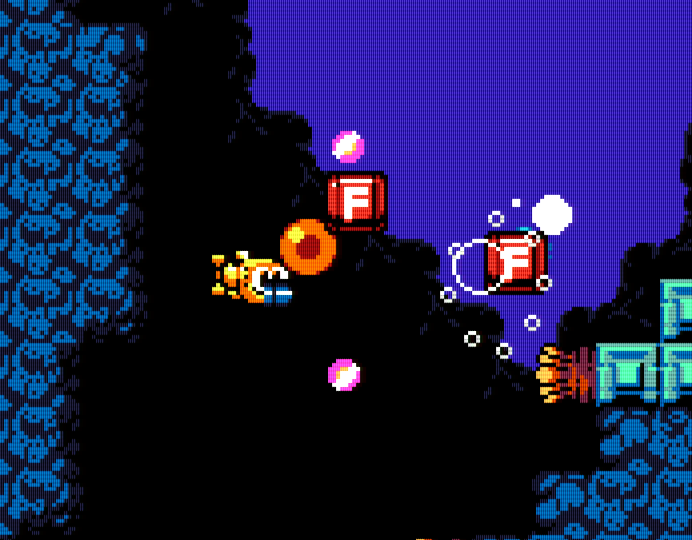
Go deep, get resources, go back up before your energy runs out. A bit like Dig Dug and very much like Motherlode, but… sigh, but underwater.
Those two games are extremely fun, and this should be fun. For some reason, though, the designers decided to add padding all over the place. Resources are very far from each other, there are many unpredictable enemies that remove a lot of your energy, and the map is a huge maze.
All these elements mean 95% of your gameplay consists on aborted attempts to get something new, when you notice you’re below 60% energy and you need to get back to the nearest base lest you run out. And then you have to make the swim back with no failures, a couple enemies being enough to make the return trip impossible. This really applies even if you get a new weapon, you can’t use it until you go back to base and get it installed, so the swim back is always going to be a boring and stressful experience.
This isn’t even original enough to get pity points. It’s just a symphony of bad game design decisions.
36. Elfazar’s Hat
It’s a top down run-and-gun with a tacked-on match three mechanic. A bit like spell cards in Touhou or those powerups in shoot-em-ups I guess, but if you get three of the same type you get more powerful attacks.
This one just barely ends up in the Bad category, because I’m apparently very Bad at it. I haven’t been able to make it past the first level. I’ll note I’ve beaten I Wanna Be the Guy, so my skill at dodging projectiles is not in question. I suspect Elfazar’s Hat is just too bullshit instead. Maybe if the theme was any fun I’d stick with it, but it’s just about a furry’s magician-themed adventures.
And yes, I know the dash has i-frames.
35. Planet Zoldath
I feel bad for placing this one so low, but… I think this one might be the most obvious “experiment”, a roguelike that plays like one of the earliest video games invented. Think of going all the way back to ET and the video game crash, that’s what I felt was being evoked here, plus a couple graphical glowups.
You navigate top-down style around these screens, collecting four types of resources and avoiding enemies. You can pick up weapons and other devices that turn those resources into something useful, like explosions and lasers. One of the devices is a translator that lets you ask some of the monsters for clues, since there are randomly generated breakable walls that hide things and paths you want.
The main issue Planet Zoldath has is that it’s not fun to play. Like I said, an experiment, a game for Game Designers instead of Players. It follows the rules it set for itself, and it’s not hampered by bad controls or overall bullshit like many other entries in UFO 50, but this concept as its best is still not an engaging experience.
34. Overbold
This feels like a tech demo for the simplest engine in the world. Almost like a fake video game you see on TV shows.
You basically walk around on that single tiny screen and shoot at enemies. The one gimmick is that there’s a betting mechanic before rounds, you can increase your difficulty for bigger rewards and consequently better powerups.
That gimmick is already in most video games, though? You’re just making it diegetic and clunky and putting it in the player’s face.
33. The Big Bell Race
One of those mini-games that supposedly don’t exist in UFO 50. It’s just a Micro Machines-like precision mini-racer, but simplified to the point of triviality to make for a boring experience. It’s based around the mechanics of Campanella, which I’ll describe below.
32. Campanella
You’re that little purple ship and have very limited fuel. The gameplay is funky and stressful, your ship is constantly sinking and every wall you knock against a wall will destroy some of your HP. Plus enemies and projectiles.
This reminds me the most of the obscure game Helious, which is probably obscure because of its unforgiving nature, but there are plenty of games with similar mechanics. I think this is not as poorly designed as many of the entries in this category, but I personally found it unfun, just way too stressful.
31. Mortol II
The first Mortol is one of the best games in the collection, but this sequel makes the worst decision possible and makes mistakes permanent. You have 99 lives and once you run out, that’s it, no chance to get more or replay parts of it, it’s one big map.
I don’t honestly know what the developers were thinking, maybe it’s a meta thing where it was meant to be bad in-universe? Remember UFO 50 has a fictional game studio history to go with it.
It’s otherwise identical to Mortol, so read that review to learn what’s what.
The Mid
You know, I can basically see why people would enjoy these games, but they either come with some glaring flaws, or are missing an “it” that would make them worth playing over their inspirations. I have no intention of ever finishing any of these.
30. Pingolf
It’s just 2D mini golf. I’ve actually reviewed Mario Golf and Walkabout Mini Golf VR here, so you could say that makes me something of an expert in the genre.
But I guess the two dimensions makes it more of a billiards game, actually. There are no hidden dephs beyond that, it’s simple, unforgiving, and boring regardless. At least it’s not Golfaria.
29. Caramel Caramel
Like the action platformer section below, this and the next entry are “just” shoot-em-ups without anything to write about (I guess this one has a photography-themed stun mechanic but I struggle to find that interesting). Also, I don’t enjoy shoot-em-ups.
28. Star Waspir
See above. This one doesn’t even have any gimmicks.
27. Ninpek
A very simple action platformer with no particular gimmicks. It’s not awful, but it has pretty much nothing special for the player. Even within this collection you have Rakshasa right there. Which is also meh, actually—
26. Rakshasa
A simple sidescrolling platformer with action that reminds me of the original Castlevania games, or maybe Ghosts ‘n Goblins. You die pretty easily, but then you get one chance to get your ghost to return to life by doing some bullshit. The bullshit gets harder every time you die.
That’s an alright gimmick, but it’s pasted on top of a very boring game. Why would you choose to play the mediocre platformers over the other 48? At least Combatants was trying something. I’m gonna keep bringing up Combatants.
25. Cyber Owls
This one is the final* game and (within the universe) made by a different developer or something, so that excuses the fact it’s 4 different unoriginal games stapled together. You can pretty much tell how this plays from the screenshot, with my addition that the rail-shooter part is even worse than you think. It’s not as bad as it could be, even given the gimmick.
24. Seaside Drive
Yet another shoot-em-up, but with an actual theme (obviously overdone now, though) and some interesting limitations (you’re stuck on the road and your ability to aim is tied to your movement) that makes it feel slightly fresher. Still pretty simple and nothing to write home about.
23. Devilition
Puzzle game where you set up chain reactions of explosions to kill demons while avoiding hurting innocent NPCs.
This one is all strategy and no tactics. I talk about Into the Breach and Bug Hunter later (though I wrote that review earlier, in retrospect this is an ass-backward approach), and they have very similar mechanics, but this one is really just a complicated chess puzzle with some flavor on top.
I find it easier than Bug Hunter, but less rewarding and “surprising”. It doesn’t really catch my attention and overall it’s a boring, mediocre experience.
22. Campanella 2
It’s basically an easier version of the first game’s funky ship flying, plus some Kero Blaster-style segments, presented in a roguelite fashion, with randomly generated levels and secrets. It’s okay, but the genres don’t really mesh, and the ship parts are still lame and repetitive.
21. Rock On! Island
The inevitable tower defense game. I enjoyed the first level, but I’m told it gets old really fast and I can very easily believe it, so I’ll tentatively avoid the Good rating. Don’t worry, I’ll get controversial later.
The main issue this game has is the fact you control a character that can place turrets, you’re not some god clicking on whatever. On one hand, this means that you can help the turrets when the enemies are attacking, which makes that phase slightly more engaging. On the other, it means placing and upgrading entities is a bit slow and annoying.
Beyond that, it’s tower defense. Hard to screw up, if not exactly my genre.
20. Pilot Quest
Part of the game is a Zelda-like, but with limited time for excursions, and timer-tied health.
You can get more seconds in the timer by saving money and buying meat.
You can get money from the Zelda-like… but that’s obviously a deadlock. The real way to get money is from idling. This is a fucking idle game. You plant things that produce money, then hire people to turn the money into newer forms of money. You keep passively earning cash even when you’re playing other UFO 50 games (though critically not when the executable is closed).
It’s not even a good instance of the genre. Cookie Clicker and even A Dark Room are more fun, with endless upgrades and some variety and strategy.7 Pilot Quest does have the Zelda side to it, which is somewhat fun I guess (and the key to upgrading your “factory” and eventually leaving the planet), but it’s timed and only accessible by paying minutes of real time.
I beat Pilot Quest in its entirety, but I regret it, in retrospect. I think this conclusively proves idling mechanics are predatory and addictive, to the point this patina of idling on a mediocre experience is enough to engage. Great experiment, horrible game but I played it to completion so I guess it goes here.
19. Bug Hunter
I contested brainlet accusations when I was talking about Barbuta, but they might be fair when applied to this game. I just can’t beat it, can barely get past the first couple rounds.
Right off the bat, it seems similar to Into the Breach, that one grid-based strategy game. Very chess-y, you have very limited moves and need to rely on perfect placement and chain reactions to get anything done.
It’s way more complex, though. You see that module window to the right? Every turn, you get a chance to swap the modules you have with new ones, and you’ll need to spend energy, those little yellow cubes. Considering “walking” and “jumping” to get those cubes in the first place requires modules, you can’t just swap to full offense. You can actually even shoot at the cubes to cause explosions, sacrificing growth for quick kills. Every offensive module has a different pattern of attack. Monsters replicate every turn unless you kill them, and once they multiply enough you automatically lose, so you can’t simply focus on gathering energy on the first couple turns. Some are aerial and….
It’s got a lot of moving parts. More than I can handle. Maybe I just never figured out the One Weird Trick in the half an hour I gave it? That’s fair, like this extremely thorough, Pulitzer-grade review.
18. Magic Garden
Namco is a terrible video game company that patented a bunch of fun concepts like “loading screen minigames”. This was a patent that thankfully expired in 2015. Unthankfully, it had already been made irrelevant by loading-screen-eliminating solid state drives in the late 00s.8
Anyway, that level of minigame is where Magic Garden falls into. It’s Snake with complications, having to herd your slimes into specific areas to turn them into a potion, which then you drink to kill the evil slimes. There are some time-based mechanics where you can temporarily avoid drinking a potion to make it “age” into a better potion, pretty standard risk/reward tradeoffs.
Incidentally, I’ve never been a huge fan of Snake because of its simplicity. It’s no Tetris, even when you get good you’re not enjoying it that much.
But I can’t even call Magic Garden an improvement over fucking Snake! The issue is the controls. I don’t know how you fuck up such simple controls, but the main character doesn’t feel… responsive to changing directions. There’s some minuscule delay, or the walking animation is messing with the intuitive timing… there’s a jumping button that has never helped me, because it requires absolute perfection from you.
And this doesn’t deserve to be mastered. The game mechanics analysts can explain exactly what went wrong here, I can only give you my intuitions.
17. Avianos
This is another game that’s going to piss people off to see this low. Hear me out, though.
While I’ve never played one of those long strategy board games, this is what I think they’re like, plus suspiciously furry-looking (scaly-looking I guess) art. Gather resources and control areas, but turn those resources into combat units at some point and face your enemy, who hopefully has failed to optimize their turns as much as you.
This is not my thing even at its best, I like puzzle games but I don’t like waiting to see if I’m doing well or badly until the halfway point of the game. I don’t think Avianos is a strategy game at its best.
For one, just look at the interface. Incredibly minuscule and ambiguous symbols all over the place, most of the features hidden behind multi step menus… you won’t know what the fuck is going on. This is one of the games most badly hurt by the retro gimmick, to the point one of its fans told me learning your way around the interface “is” the game, that the enemy tribe will not present significant challenge once you understand even the basics of what each feature does.
There are a bunch of cool-on-paper mechanics like prayer. Every turn you choose which god to pray to. Each gives a set of different benefits, and if you want a well rounded build you need to spread prayer around. However, if you focus on a single god, you get access to massive upset-causing skills like moving mountains around. This sounds fun to use, but it’s not very fun to face.
Just a meh experience.
16. Vainger
I thought this one was pretty great when I started, but as I continued I realized it’s just Metroid with a gravity reversal mechanic. Warp Tank is a simpler game entirely built around gravity reversal, and that makes it good. In this genre, it just feels like a bit of a mess, and I kept getting lost or stuck.
Overall, I wasn’t feeling it. A very involved game with an unfitting gimmick, plus the constant knowledge that I could put that same time investment into Metroid Dread, have more fun, and avoid dealing with the retro shtick. Maybe this makes this rating unfair, who knows.
The Good
You know, sometimes you just want to sit down and play some alright arcade games like Tumblepop, or a free flash game like Crush the Castle or something. This is the level of quality these are at.
15. Waldorf’s Journey
Now this is one I think I’m rating higher than the average? I don’t know. You’re a walrus horizontally flinging yourself at uncontrollable speeds and trajectories onto tiny platforms. It sounds frustrating, and it is frustrating. There are some mercy mechanics and some items you can get to make your journey easier. The game has a ton of weird semi-hidden mechanics in general.
I think I enjoyed it because it strongly reminds me of Nanaca Crash and its slightly more complex clones. The original was bullshit, you had one go at choosing your trajectory, with randomly placed characters altering your jump, and three manual boosts before you eventually fell on the ground.
Waldorf’s Journey gives you a bit more control over the experience, but it’s the same thing at its core (I know this is an insane thing to say). Even when you’re good at the game—and I think I am, I was one jump off the end on my third try—you’re still taking leaps of faith all over the place and encountering weird shit on the way.
I enjoyed it, even though it’s maybe the most questionable entry for “game” in the collection. Call it an experience.
14. Paint Chase
I already mentioned this game’s deal, a bit like Pacman meets Battle Painters. Rival rollers paint the level red, you paint it blue, you need to devise a perfect path to kill the rollers as fast as possible while also keeping your blue/red paint ratio above 1:1.
I think that even if it was perfect, it would never get out of this category. It’s a bit too simple. While I never experienced this myself in the few rounds I played, and actually got fairly far, many players complain that the game gets less “interactive” and just unfun later on. Maybe it requires memorization then? Well, I didn’t get there, so it just gets a Good rating from me.
13. Bushido Ball
It’s literally just Windjammers, but weebier and very slightly worse. This is one of the purest demakes in the collection and the transition hurts the core game. Controls never stop feeling slightly janky, with your sword’s hitbox constantly missing the ball despite physics demanding a perfect hit.
Still pretty fun, but it just made me want play the original instead.
12. Hyper Contender
Very well executed 2D Smash Brothers-style game, though I’m most reminded of the old Digimon Rumble Arena series that I actually played, mostly because there are fewer gimmicks.
The controls are smooth as butter, and unlike with Combatants, exploiting the enemy AI is actually a lot of fun. That said, it’s pretty shallow and I can’t see myself putting more hours into it.
11. Attactics
This one is another shallow entry. Visually and conceptually it reminds me of the flash game Age of War, but it’s less of a resource manager and more RTS-y.
You don’t choose when and which units to spawn, the game does it for you, as well as moving them all forward every real-time turn. You can then move them vertically or back in real time, for example constantly moving archers to the back of open lanes so they get free kills with no risk. As the levels progress, more complicated units with new gimmicks are spawned.
It’s easier than it sounds, but I feel it only progresses horizontally and never vertically, if that makes sense. The core game gets old pretty fast. Fun while it lasts, I guess.
10. Velgress
UFO 50’s take on 2001’s Icy Tower, but with guns. Sometimes, adding guns is all it takes.
It’s not deep, it’s action platforming, you ascend a tower as spikes from below rush to kill you. Every type of floor breaks after you step on it, with varying resiliences. Enemy types are all incredibly annoying so you better learn their patterns.
The only thing that kills this game is how unforgiving it is. It would be an easy tweak to just add a number of lives per level or something. When an enemy hits you, you lose control of your character and spend a couple seconds metaphorically rolling the dice to see if she lands on a cloud or the spikes below. Back to the start!
I was ready to put this near the top, but I put another hour into the game and discovered that even when I got better, I was still frustrated by all the bullshit. If the developers end up somehow reading this, they should really consider tweaking a couple variables.
9. Party House
Hilariously complicated nonsense game until you realize it’s a deckbuilder like Slay the Spire or Balatro, but with a party skin and some other fun twists.
Like Velgress, I really want to enjoy this, it gets so close, but has some glaring design failures. There’s a risk/reward element where certain characters (cards) add “trouble”. If you go over x “trouble”, the cops are called and the party is over, with one limited round wasted and no resources earned.
There are many mechanics to lower the overall trouble, or get foresight and know whether the next card will add trouble or not. You can call the party early and avoid losing the entire round, simply giving up on potential profit. However, you rely on those characters being drawn before the trouble characters, and every trouble-avoiding mechanic is usually less profitable, to the point playing it safe will also result in a loss.
It feels wrong to have a deckbuilder where one single instance of bad luck can lose you the game with perfect play, where you can’t ever build real security for yourself (or where if you do, you lose a different way). It’s like if Balatro was entirely composed of the first ante at the poorly designed high stakes, you’re at the mercy of the RNG.
Just like Balatro’s high stakes, I think you could actually fix this by altering the risk/reward balance. Touch up some numbers. I think the cops are bad core design regardless, so it will never be perfect, but there’s a lot of easy room for improvement.
The Amazing
Some games break the bounds of “just another entry” and enter the territory of “shit, I’d actually pay money for this”.
8. Mini & Max
A fun and charming platformer where you can shrink and keep shrinking. The room you’re in becomes bigger and bigger, until you’re exploring massive expanses of a microscopic landscape. There’s a real dramatic storyline to it and a bunch of quests to complete, mostly taking items from one place to another, getting bigger to traverse distances faster or get around obstacles…
This is another of those games that feel like could be a regular game released for a home console, which just happened to be discovered recently. I enjoyed what I played of this a lot, and I fully plan to return to it until I beat it.
7. Valbrace
When UFO 50 gets gimmicky it usually blows up in the developer’s face, but it somehow works for this game. It’s a first person dungeon crawler like Legends of Grimrock or Grimoire or other games that contain “Grim”, except for Grimstone, that terrible cowboy JRPG.
Anyway, first person dungeon crawler is the base. But there’s a spells mechanic that’s based on player knowledge (so usable from the get-go in further runs)… and the combat is fully featured, real time Punch-Out!!
There’s a lot of secret bullshit as expected from the genre, but it’s surprisingly synergetic and fun in spite of that, alternating careful exploration with action fights.
6. Mooncat
I fucking hated this game when I first opened it up. Obviously it really grew on me.
As you’ve already seen earlier in this article, I don’t like difficulty that purely comes from a bad control scheme. Mooncat is a Super Mario-like platformer, but the controls shift to different keys depending on which direction your character is facing. That might be hard to picture, so don’t bother, just think of something almost as unintuitive as QWOP, but which you can eventually master.
And thinking of this game with QWOP in mind is what made me get further and further in until I finally beat it. It’s not tank controls for a driving game, the controls are the game, and the Experience is like half an hour long. Once it clicks, it’s almost a puzzle platformer with your muscles doing the thinking.9 Fun, short and sweet, the ideal template for the collection.
5. Mortol
Another game I initially hated, Mortol is a bit like Lemmings with platforming. Honestly, Lemmings is the far better game, and if the intent was “turning” it into this genre it feels a bit like when people made a flash game based on Portal—yes, very impressive and fun, but come on, what are you doing.10
You get 20 lives, but we could call them bodies instead. See that small screenshot above the review? Life 14 is standing on the dead body of Life 15, below Life 16, and above a block of stone that used to be Life 17. Each body can perform one of three rituals: explode to destroy enemies and bricks, rocket towards a wall to become a platform, or turn into a block.
I’m not sure 20 lives is enough to beat all the levels, but those little squares with numbers inside them give you additional ones. Waste one rocketed body into it to lose one life and gain three, which encapsulates the whole challenge.
It felt unforgiving until I learned that you can do the levels in any order. Beat level 2 with 15 lives remaining, then have to beat the harder level 3 with those 15? Don’t worry, you can replay level 2 and even level 1 to retroactively improve your “score” (+bodies or -bodies), and then go back to level 3 with a full legion. Perfect play doesn’t involve “being good at video games”, either, you just need to plan things out a bit and use the right abilities to minimize lives spent. If you fuck up, just go back to earlier levels and apply your gained wisdom.
I still didn’t beat it, or even get very far, but it’s a cool concept and I will probably go back to finish it.
4. Camouflage
Your character is a lizard that can choose to take on the color of the block under it. There are enemies that will kill you if they see you, even in the distance. You need to plan out a perfect path and shift colors at the right point to make it to the exit of each level (with optional side goals for points).
It’s a very simple puzzle game (I beat it pretty fast), but it’s refreshing in a collection with so many gimmicks all over the place. It’s neither derivative nor a unique snowflake. Wouldn’t surprise me to see this in the actual SNES roundup.
3. Warptank
This is basically VVVVVV plus horizontal jumps. Beyond the extra axis it doesn’t offer much to talk about. But it’s fun!
2. Night Manor
A point-and-click game by genre, but people who played flash games will instantly recognize it as a more-complex-than-usual Escape the Room entry.
It’s horror themed, and there’s a monster guy chasing you around. When he’s in the same room as you, your cursor (which you control with a keyboard) starts shaking, making it hard to escape and hide. That’s cool, I guess, but it’s the only thing it adds to the existing formula, if you can even consider that an addition. I feel lukewarm about the horror themes.
That said, the formula is awesome, I love Escape the Room games, so it’s automatically here. Welcome to User Ratings.
1. Rail Heist
My favorite by far. This initially appears to be a janky sidescrolling stealth game. You jump from a horse onto trains, avoid the guard sheriffs get the gold, then escape whence you came.
But the execution, dear god. I know it looks like a 8bit game, but you can interact with nearly everything on the screen in cool ways. There are voxel11 based destruction mechanics, general physics, precision shooting, what /v/ once dubbed “TECHNOLOGY” moments.12 The NPCs are smart. Once you’re discovered, the game becomes turn-based, each side gets five seconds to move, and if you’re frozen in anyone’s line of sight, you die.
The individual mechanics synergize to the point you feel like James Bond meets Hotline Miami, planning, acting, reacting. It’s so good. I cannot recommend this more.
UFO 50 is altogether an interesting experience, here are a few remaining takeaways:
Fifty is way too many. I think The Big Bell Race is a good sign that they were just making trash to get to the meme number, and there are many games that cover the same genres and design philosophies. I think something tighter like 20 would have preserved a more reasonable quality/quantity tradeoff.
The music is really bad. Unlike the graphics there’s not much variation to it, and it’s made of really short and repetitive loops by someone who doesn’t seem to have a talent for composition.
UFO 50 is ostensibly anti-war and anti-exploitation but I notice it’s extracting ideas from the golden age of free flash games and then selling them for money.
There’s a secret game that unlocks some other minigames but it’s all based around ARG-type terminal stuff which I don’t feel like doing.
The chaotic nature of the project is messing with my ability to evaluate it as a whole. Rail Heist is great, but is it worth 25 dollars? Are the top games all combined worth that? I guess.
I do hate waste, though, and you’re kind of voting with your wallet here. UFO 50 is successful? Then devs will conspire and make slightly overpriced collections of game jam minigames that you can’t individually purchase, a couple talented devs dragged down by the rest.
It’s probably worth the danger. It’s not like indie devs don’t have competition in cynical cash grabs.
This is a very negative conclusion, but after fifty mini-reviews, only fifteen of which are positive, it’s to be expected. Make stupid games, win stupid articles.
All this controversy begets opposition. Come on, try to tell me Onion Delivery is actually good. I fucking dare you.
“B-but we made a title screen and a credits screen, that means it’s a real game” helps us conclude Metal Gear Solid 4: Guns of the Patriots is the most gamey game of all time.
The within-category placement is pretty arbitrary, so maybe Golfaria is technically better than Onion Delivery, but who cares. The world demands hard numbers.
I didn’t know this until I wrote this review, but it felt familiar, and TVTropes confirms this is a re-release of sorts of an existing flash game from 2004 by one of the developers. I don’t think I played this one, but I definitely played flash games influenced by it.
Known for character-Ness in video games.
Yes I know about Mother 3 and many other JRPGs that use timed mechanics. It’s actually closest to the Toby Fox games.
Pilot Quest’s strategy amounts to choosing which resource you want more of. There are only three types of resources and they each buy different kinds of upgrade. The upgrades range from completely useless to marginal improvements in production. There’s really nothing interesting about it.
If you ever hear me whine about the false benefits of IP Law, this is one of the examples on my mind.
First person to say this makes Onion Delivery good gets shot and then thrown out of my airplane.
“What the fuck are you saying, this is nothing like Lemmings, it’s like Game You Haven’t Played” Maybe I just miss Lemmings. Someone bring it back. Please.
Obviously not literally voxels, it’s fully 2D.
The dictionary example for TECHNOLOGY is… wow, I’m bringing up Metal Gear Solid again? Anyway, it’s a series known for out-of-the-box, painstakingly programmed alternate solutions to challenges. You need to change the temperature of a key to use it, and you’re told by mission control to leave to a remote warm area or cold area. A clever player can instead shoot at steam and liquid nitrogen pipes next to the input mechanism. There are dozens of these tricks.
Equip one of the cardboard boxes so that it is ready to go with quick-change. Hit Meryl, then quickly equip the cardboard box. She'll whistle to call the wolves to attack the player, but instead, the wolf pup will urinate on the box. The advantage here is that when crossing the cavern later in the game, if the player is wearing the box, the wolves won't attack them.
In a latter entry, you can wait for a really old sniper to die of old age instead of directly fighting him.
Rail Heist never goes this far, and you’re more directly exposed to all the tricks you can use, but it goes one step further than the average game.




